
























































Continued from cover
79 th State Assembly District:
The three candidates running for a seat on the assembly include current Mayor of Lemon Grove, Racquel Vasquez, Educator, Lashae Sharp Collins, and La Mesa Councilmember, Colin Parent.
Vasquez is currently serving her second term as Mayor of Lemon Grove, notably the first African-American female to fill that role. During the Voice & Viewpoint candidate forum held on Feb. 15th, Vasquez spoke on the achievements she has accomplished on behalf of her city, which included Lemon Grove being one of the only 13 cities in California that successfully met the state mandated affordable housing requirements.
“That’s the kind of proven and effective leadership that we have, and I can invest in that kind of leadership in Sacramento,” said Vasquez.
Parent, who is currently serving his eighth year on the La Mesa City Council, discussed his work with the Department of Housing and Community Development, the State Housing Commission, and his non-profit, Circulate San Diego. Throughout his time in office, Parent spoke about how La Mesa doubled the number of homeless outreach assistants serving as social workers, as opposed to uniformed police officers
Continued from cover
While there have been a number of attacks on Black communities in the United States, there’s one in particular that has become very well known. The Tulsa Race Massacre took place on May 31st and June 1st in 1921, dozens of white mobs attacked the Greenwood District of Tulsa Oklahoma which was also known as Black Wall Street because of its wealthy Black community. 35 blocks were burned and looted, destroyed almost 200 businesses, and displacing over
having to make those interactions.
“Due to my background in having served in the Governor’s administration in the state department of housing, I am going to be able to make an impact on [homelessness] on day one.” said Councilmember Parent.
Meanwhile, Sharp-Collins takes pride in the fact that she is the “only candidate born and raised” in Southeastern San Diego. In addition she notes that she brings nine years of experience already working in this specific office, as she served as the District Director for the now Secretary of State, Dr. Shirley Weber. Sharp remains a fierce advocate for education, including her work in boosting transparency and accountability in school funding.
Positioning herself to be the “voice” of her district, Sharp-Collins asserts, “I am running because of you. It’s time to have someone up there to bring a different mindset. It’s time we start to reimage how we are going to approach the various issues that are facing our current district.”
The race for San Diego District 4 Councilmember is a competitive one, with implications that will most likely affect the dynamics within City leadership. Three candidates are vying to fill the vacant seat: Henry Foster III, Chida WarrenDarby, and Tylissa Susberry.
10,000 people. The current day valuation of the property damage done to Black Wall Street is over $31 million dollars.
Not only was the Tulsa Race Massacre devastating economically, but it broke the spirit of the community impacted by the attack. What’s the point of continuing to build if it will be destroyed every time?
Predating the Tulsa Race Massacre was The Wilmington Massacre of 1898. Wilmington North Carolina was proving itself to be a place of promise for Black Americans where they could

Henry Foster III, is a third generation resident of District Four, a longtime Chief of Staff for Supervisor Monica Montgomery-Steppe, and has 25 years of experience in the construction industry.
“I know what our community needs, and I have the experience to make it happen. I’m running to build a stronger, more sustainable, and thriving District Four and keep putting people first at City Hall,” said Foster in his Ballotpedia profile.
Prior to his role as chief of staff, he held the position of Equal Opportunity Contracting Program Manager for the City of San Diego for six years.
“I’m the only candidate that has both operational experience and legislative experience.” said Foster at the Feb. 21st Councilmember forum.
Yet, Warren-Darby, denied Foster’s claim at the forum. Warren-Darby currently serves under Gloria’s administration as the Director of Boards and Commissions, working to bring more equitable representation into the region’s fifty commissions and “ensuring that communities of color are heard at the table.”
Throughout her campaign she has highlighted her commitment to install a better emergency preparedness plan for the community, increasing communication, empowering communitybased organizations, and business investment. As well as infrastructure and public safety that’s designed for the community.
thrive within a community of peers. Members of their community were adamant about exercising their right to vote and giving themselves political force as promised by the 13th, 14th and 15th amendments.
Trouble emerged when white supremacist in neighboring areas caught wind of how powerful of a community the people of Wilmington had created between embracing politics and creating their own economy by way of entrepreneurship. On November 10th, white mobs massacred the city attacking 60 or more Black men and causing a number of the residents to flee. While the attack on Wilmington wasn’t as severe as the Tulsa Massacre, it did the same amount of damage to it’s inhabitants mentally. Again, what’s the point of building a community if it’s going to be targeted by hate and destroyed every time it’s built?
Meanwhile, Tylissa Susberry has been a resident of the district for 50 years, works for three large local non-profits, and has held multiple roles working for local government offices as a policy advisor and State Senate.
“We have to do more in our district, our district deserves better. Right now its time for change,” said Susberry, touting her slogan “Tylissa 4 Change.”
Change how? According to Susberry, she is focused on community investment via small businesses, nonprofits, and entrepreneurial development.
“To me business is everything, and entrepreneurship is everything in our district, so that is what I am running on–small business, and economic development.” said Susberry.
With each candidate presenting distinct perspectives and strategies, voters face the crucial task of determining who possesses the leadership qualities and plans necessary to address the pressing challenges facing their communities. As the countdown to election day continues, the outcome of these races remains uncertain, underscoring the significance of every voter’s decision in shaping the trajectory of District 4 and the broader San Diego landscape.
To learn more about the races, and where and how to vote feel free to visit our voter guide:
https://sdvoice.info/voting-guide-2024/
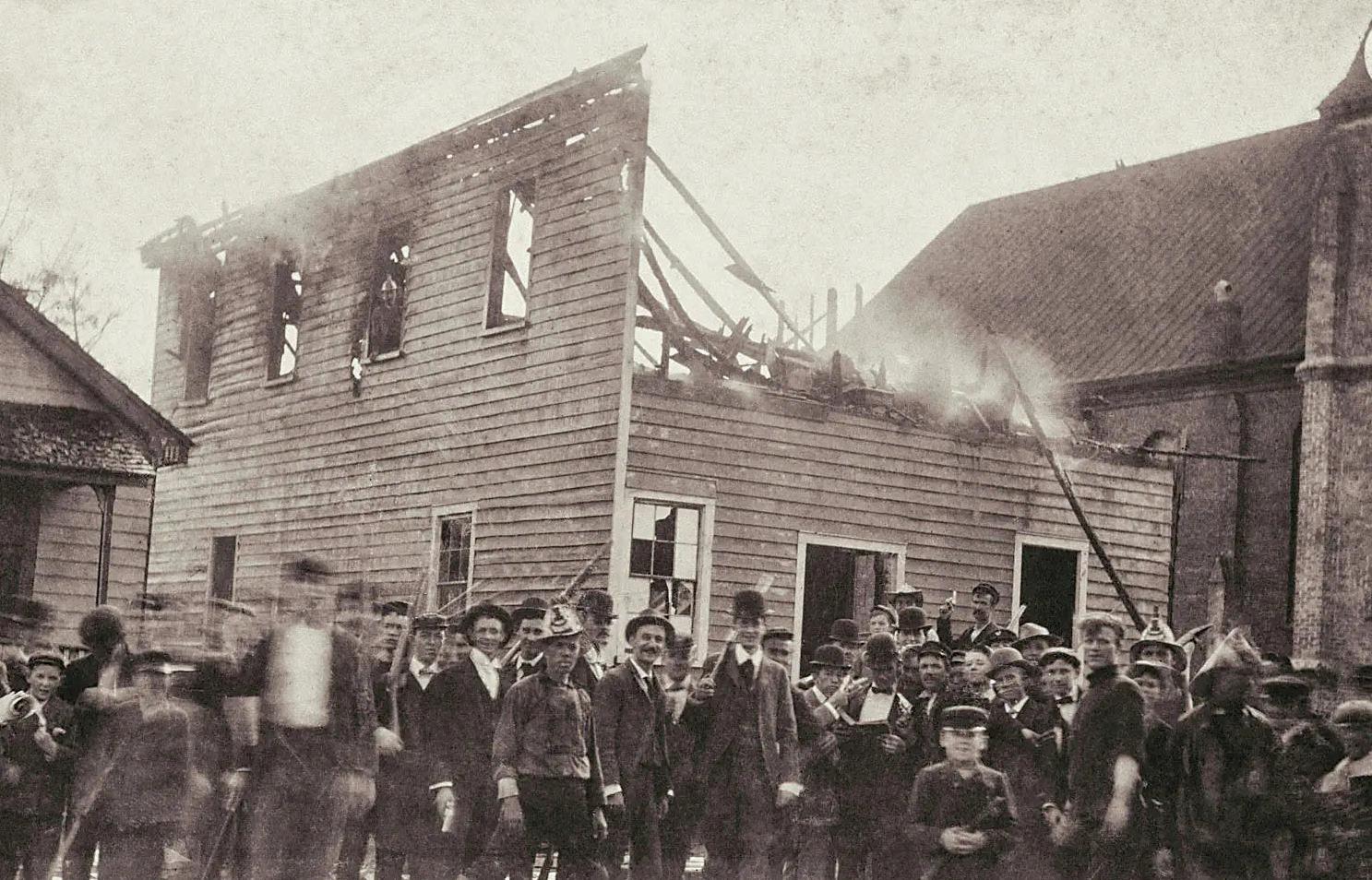
attacked the community of Rosewood Florida which was highly populated by Black residents. Over 30 residents of Rosewood were killed causing the remaining residents to flee the area indefinitely. The attack took place after a white woman used a Black, male resident by the name of Mr. Hunter as her scapegoat to cover upher extra marital affairs.
Another Black community that was thriving before white mobs destroyed it was Oscarville, also known as Lake Lanier. Before it’s destruction, Oscarville was inhabited by a thriving Black community full of carpenters, brick layers, blacksmiths, and farmers.
After a 19 years old white woman was found dead in the woods near Oscarville, the white men in outlying cities do what they were known to do historically: go to the nearest Black town and destroy everything claiming it’s in retaliation to Black mens violence against a white woman. The mobs attacked Oscarville at night, firebombing the churches, setting arson to their homes, and attacking residents.
Fast forward to the late 1950s, the Buford Dam was built, and Lake Lanier was formed, covering up Oscarville and all the history beneath its surface. To this day, the area holds an intense energy and has been said to be haunted by the spirits of the people who once inhabited the land.
Taking a moment to step back into 1923, another incident occurred that was immortalized by way of film by late filmmaker John Singleton. On January 5th 1923, a mob of over 200 white men
Continued from cover
We gathered elections data on city, county and school district elections over the last three decades from medium and large places – any city with a population of at least 50,000 people and any county with a population of at least 75,000 in 2020. These 877 different cities and 1,005 different counties encompass more than half of the U.S. population. Using that data, we calculated the share of winning candidates who were members of several racial and ethnic groups.
In each place, we compared the percentage of the population from each of those demographic groups with the percentage of elected officials from those same groups. This allowed us to gauge whether each of these demographic groups was proportionally represented, or if they were overrepresented or underrepre-
The lie itself created a hostile witch hunt for the man in question which eventually escalated to an attack on the home of Black Rosewood resident Sylvester Carrier, who was suspected of harboring Mr. Hunter. The posse who attacked Sylvesters home was unsuccessful and instead, killed an elderly woman in the home. A gunfight between Carrier and the mob lasted hours, killing people from both groups. The rest is history.
There are a number of predominantly Black cities that were burned down, bombed, and destroyed at the hands of white mobs. Over time, the erasure of thriving Black communities has been more widely discussed but overall, there is still much to learn about how these major events have shaped the potential for Black communities to grow moving forward
Not only have Black people continued to thrive regardless of hardships faced in the past and present day, but there are still predominantly Black communities that have been untouched as of now and that says a lot about the kind of resilience Black people embody. The legacies of thriving Black cities impacted by hatred may have been erased, but they will never be forgotten.
sented among their local politicians.
Municipal officials
Across cities in the U.S., we looked at the offices of mayor and city councilor. One commonality stands out: Nearly universally, the percentage of elected officials who are white is higher than the white share of the population. This overrepresentation persists from the early 1990s — the first time period from which we have data — to more recent years among mayors. Among city councilors, it’s a bit closer to parity with the population.
For mayors in recent years, there is a particularly large gap: On average, 78% of mayors are white, while only 68% of the population in the cities in our data is white. City councilors, on the other hand, tend to look much more like the population in their cities.
See GOVERNMENT page 16
 By Dr. John E. Warren PUBLISHER, THE SAN DIEGO VOICE & VIEWPOINT
By Dr. John E. Warren PUBLISHER, THE SAN DIEGO VOICE & VIEWPOINT
Next week, a great deal of America will experience Super Tuesday. This is the day of mass Presidential Primaries in multiple states. California is a participant as we will have the opportunity to elect a new United States Senator, new Members to the State Senate as well as the State Assembly. Here in San Diego, we will have additional opportunities on the ballot from City Council members to Judges; to City Attorney and new members of the San Diego City Council as well as candidates in other cities in the County.
While California is a predominantly “Blue State” meaning Democratic, there are Republicans both in office and seeking office. How we vote or fail to vote as a State can be a shift in the balance of power in the U.S. House of Representatives. The control of the United States Senate also hangs in the balance as the political parties seek to

put their “best” candidates forward toward the November General Election. That election will determine who the President of the United States will be for the next four years. Those candidates who win the primary ballots and make it to the General Election will be on the same ballot in November as our presidential candidates.
Believe it or not, you are a part of this drama. Your vote or your failure to vote will determine the outcome of next Tuesday's elections here in our cities, counties and state offices. Please know that you don’t have to vote and that there are people who not only hope you don’t vote, but are counting on the fact that for a variety of reasons, you will not vote.
This means that if you don’t vote, please don’t bother to complain about such things as high rents, gas prices, food bills and low wages. Your no vote would have put in office those people who will be giving you all of the above things you think are really bad now, but will be so much worse in the future with our new office holders.
As Black people let us remember there was a time when it was against the law to teach us to read or write; let us remember that there was a time when one had to pay what was called a “poll tax” to vote or if we were black and showed up to vote, we had to guess at the number of Jelly Beans in a jar; we were often fired from meaningless jobs for trying to vote when no other jobs were available to us.
With all the choices on the ballot for Tuesday, if you live in the Fourth City Council District of the City of San Diego, this newspaper is asking that you vote CHIDA WARREN DARBY as the next city council member and that your vote for her and those you select, will be your vote and not that of a slate put together by some political group that has hand selected those candidates that they think will do their bidding in office instead of our bidding as citizen and resident. All these add up to where we started: Your Vote, Our Answer, and Our Future.
The streets of America, once shrouded in shadows, are filled with the flicker of hope as Black History Month comes upon us. A time to reflect on the struggles and successes of African Americans in this great nation. But amongst the celebrations and festivities, there is one crucial aspect that often remains shrouded in the darkness of ignorance.
The Second Amendment.
It’s a delicate topic, one that is often swept under the rug and avoided during this time of year. But let’s not forget the role that this amendment has played in securing the rights and liberties of not just African Americans, but all Americans. From

the Civil War through the civil rights movement and even until today, the Second Amendment has been a powerful tool in the hands of those who have fought for justice and equality.
But unfortunately, as with most things in Black history, this topic has been silenced and overshadowed. The harsh reality is that laws were put in place to keep slaves and freed Black men from obtaining firearms.
And even after the Civil War, many states passed what’s known as Black Codes, intentionally designed to restrict African Americans from exercising their right to keep and bear arms.
These laws, coupled with the growing violence against African Americans, gave birth to an unlikely ally in the fight for civil rights:
the NRA. Yes, you heard that right. The National Rifle Association, often portrayed as a white, racist organization, was founded by three union officers who fought for the end of slavery and the civil rights of African Americans. They recognized the need for individuals to defend themselves against the tyranny and violence of the Ku Klux Klan, as the government was not doing enough to protect them.
But as with most things that go against the status quo, there were those who were not pleased. And thus, the gun control movement was born. But make no mistake, it was not about protecting people or reducing violence. It was about keeping guns out of the hands of African Americans.
See HISTORY page 16
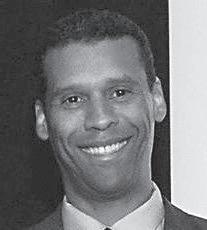 By Robert Blackwell Jr.
By Robert Blackwell Jr.
The recent Supreme Court ruling declaring race-based university admissions unconstitutional marks a significant turning point in the pursuit of a colorblind society. As we contemplate the implications of this decision, it is imperative that we consider what comes next. One area that warrants attention is the elimination of race-based considerations in procurement.
Unfortunately, in this realm, the Black community bears the brunt of blame, without reaping commensurate benefits.
Drawing from a review of the 2010 census data, a stark reality emerges: Majority-owned companies with employees generated annual revenues of $9.1 trillion, while women-owned businesses contributed $1 trillion. Other ethnic groups such as Asian and Hispanic Americans registered revenues of $455 billion and $276 billion, respectively. In contrast, Black-owned businesses accounted for a mere $98 billion. This disparity underscores a direct correlation between entrepreneurial-led business participation, and community wellness outcomes.
The absence of real business participation opportunities for Black entrepreneurs perpetuates a cycle of poverty and its accompanying symptoms, including inadequate education, healthcare and safety. While well-intentioned lectures and nominal grants are offered, these gestures fail to translate into genuine business opportunities. It’s disheartening that our community’s talent goes largely untapped due to a lack of meaningful engagement with Black entrepreneurs.
Now, as the Supreme Court ruling paves the way for the end of race-based procurement considerations, we face a critical juncture. Failing to develop a new strategy that focuses on non-race-based approaches will have detrimental consequences for the already fragile state of Black businesses. Therefore, we all have, in my opinion, a moral responsibility to actively seek and secure avenues for increased Black business participation. No business can survive without paying customers, and access to a customer is significantly more important than access to loans and equity in most cases.
We must strive for a new era — a fourth great American movement — dedicated to demonstrating that the free enterprise system can work for everyone. It is imperative that we emphasize full Black business participation in the modern economy, where wealth creation and community well-being are intertwined. The benefits of entrepreneurial involvement extend far beyond job creation. A thriving entrepreneurial class not only provides opportunities for adults to be sure, but also fosters aspirations among young people, essential for the vitality of any community.
We are all in this together; our fate is intertwined. It is time to shift our focus to the modern sectors of the economy where wealth is created. Only by doing so can we mitigate the consequences of economic disadvantage and uplift our fellow citizens. When we fix the demand side of the business participation, we will fix the supply side, creating a pathway of success for younger entrepreneurs to get the opportunity and mentoring they need from the successful entrepreneurs that preceded them. Let’s “Just do Business” and forge new pathways to success for Black entrepreneurs. The entire country will benefit.
Robert Blackwell, Jr. is chairman of the Board of EKI-Digital, a digital transformation consultancy firm based in Chicago, and founder of TESC.Love, a movement of people of goodwill dedicated to proving that the free enterprise system works for everyone.

Cultural icons who have made an impact on the Black community in San Diego were honored at the Keepers of the Culture event in Balboa Park on February 24th.
Hosted by the San Diego Black Arts and Culture District in conjunction with the San Diego African American Museum of Fine Arts and the San Diego History Center, the event packed the house while paying homage to Supervisor Monica Montgomery Steppe who was the first Black woman to win election to the San Diego


Board of Supervisors, Vernon Sukumu who is a community activist and the former Chair of the Black federation and the Welfare Rights Organization, and members of the legendary R&B group Satisfaction.
The program opened with a musical performance from the group, Satisfaction, and segued into a panel where featured award recipients told stories of their careers, personal memories of San Diego, and how they each made a cultural impact on the community.
After the panel discussion, attendees were given the opportunity to ask the panelist a series of questions. Everything from advice on inspiring upcoming generations to questions about how the community can bring back social happen-
HATTIE
Hattie McDaniel, born on June 10, 1895, in Wichita, Kansas, made history by becoming the first Black person to win an Academy Award. Her groundbreaking achievement occurred in 1940 when she won the Oscar for Best Supporting Actress for her role as Mammy in the film “Gone with the Wind.” However, the ceremony took place in a segregated setting, with McDaniel seated separately.

Facing criticism for roles perpetuating stereotypes, McDaniel defended her work, stating she’d “rather make seven hundred dollars a week playing a maid than seven dollars being one,” according to Wikipedia. Despite the controversy, her win marked a significant milestone in the film industry. McDaniel’s career extended beyond acting; she was also a radio performer and singer. Her journey was marked by resilience and determination in an era of racial inequality. She continued to break barriers, opening doors for future Black actors and actresses. McDaniel’s legacy reflects both her individual accomplishments and the broader struggles against discrimination in the entertainment world. Her Oscar win, while a symbol of progress, remains a testament to the challenges faced by Black artists during that time. Hattie McDaniel passed away on October 26, 1952, leaving an indelible mark on the history of film and paving the way for greater diversity in the industry.
Augusta Savage, born on February 29, 1892, in Green Cove Springs, Florida, emerged as a pioneering Black sculptor during the Harlem Renaissance. Overcoming racial and gender barriers, Savage’s artistic journey began with molding clay from local riverbanks. Recognizing her talent, a benefactor supported her education, leading her to study at Cooper Union and the Fontainebleau School of Fine Arts in France.
Returning to the U.S., Savage gained renown for her sculptures celebrating Black life and addressing social issues. Notably, her piece “Gamin” (1929) received acclaim at the Salon d’Automne in Paris. In 1934, she became the first Black artist elected to the National Association of Women Painters and Sculptors.

Despite financial struggles and racial bias, Savage’s impact endured. Her attempt to establish the Savage Studio of Arts and Crafts in Harlem faced challenges, yet it provided crucial art education opportunities for Blacks. Her legacy lies in her influential sculptures, including the iconic portrait bust of W. E. B. Du Bois, and her role in fostering opportunities for Black artists. Augusta Savage passed away on March 27, 1962, leaving behind a powerful legacy in the fight for racial equality in the arts.


ings like the Catfish Club and live music in the park on Sundays was brought to the floor. One of the other highlights of the evening was watching several generations of San Diego natives come out to support their friends and family who have maintained a cultural impact on the city. Seeing several generations of people inspired to not only be great but do good was nothing short of heartfelt and inspiring.
The Black community in San Diego has always done a great job of sticking together and creating space to thrive. The Keepers of the Culture are a reflection of that practice and their efforts towards uplifting San Diego are admirable to say the least. Wonderful way to wrap up Black History Month!



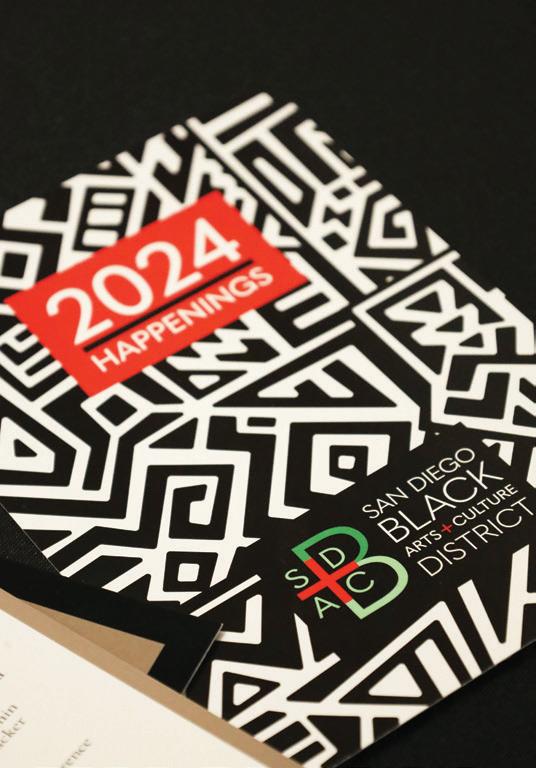
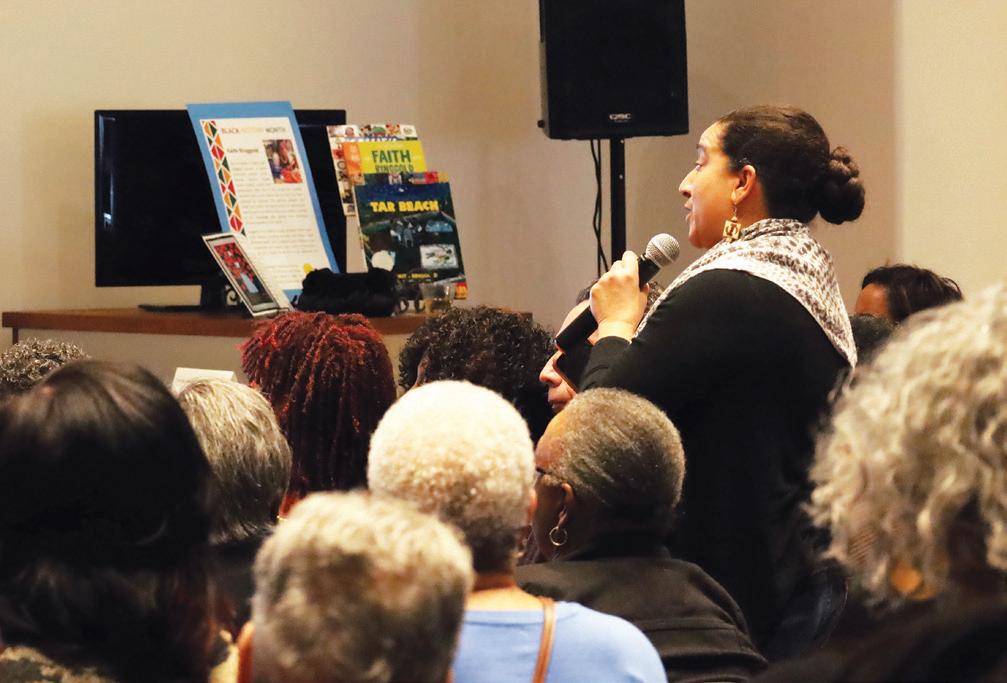

The U.S. Small Business Administration (SBA) will be opening a Business Recovery Center in National City for businesses that were impacted by the severe storm and flooding from Jan. 2123.
The center opened on Monday, Feb. 26 at 12 p.m. at the Southwestern College Higher Education Center
located at 880 National City Blvd. National City, CA 91950. It will be in Room 7100 on the first floor in the Center for Business Advancement.
SBA representatives will be available to help business owners get access to the services they need and low-interest loans. The Business Recovery Center will be open Monday through Friday from 8:30 a.m. to 5 p.m. No appointment is necessary.
Businesses and private nonprofit organizations may borrow up to $2 million to repair or replace dam -
aged or destroyed property, equipment, inventory, and other business assets. The loans will cover losses that are not fully covered by insurance or other recoveries.
Interest on SBA disaster loans will not accrue until 12 months from the date of the first disbursement.
Repayment of loans will also begin 12 months from the date of the first disbursement.
To apply for a disaster loan online or find more disaster information assistance, visit SBA.gov/disaster, call the
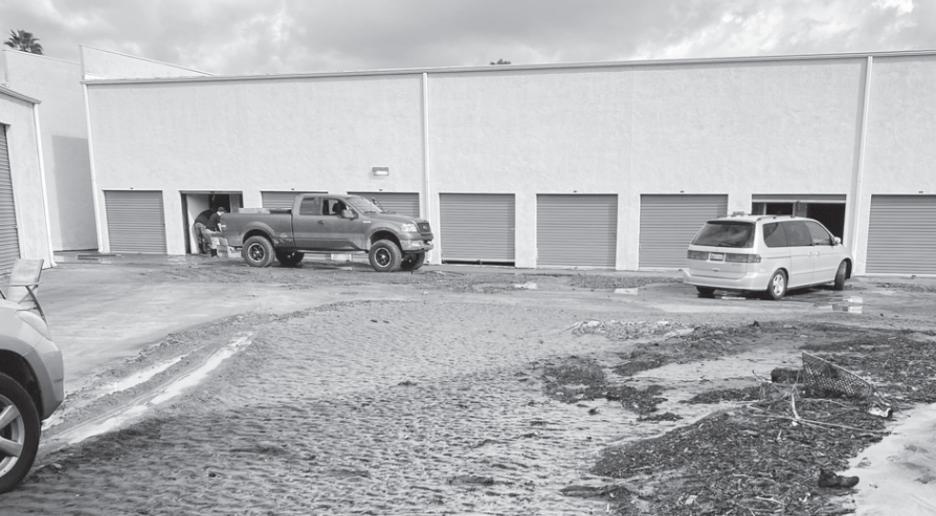
PHOTO:
SBA Customer Service Center at 800-659-2955 or email disastercustomerservice@sba.gov. SBA representatives will also provide help to business owners and residents at the FEMA disaster recovery centers when they open to the public.
The deadline to apply for property damage is April 19, 2024. The deadline to apply for economic injury is
Nov. 19, 2024.
Homeowners impacted by the storm can also apply for low-interest disaster loans through the SBA disaster assistance website.
For more information about storm recovery resources, including how to apply for FEMA disaster assistance, visit AlertSanDiego.org/Recovery.
A Public Policy Institute of California report released last week on labor force participation within the state indicated that racial gaps continue to exist in the state.
“White Californians have the highest participation rates (86%), and Black Californians the lowest (81%),” states the report.
“In terms of gender, Latino, White, and Asian men have very similar labor force participation rates (around 91%), with Black men 7 percentage points lower (83%). Among women, Latina women have the lowest participation rate (74%),” it continues.
At 89%, Black women have a higher labor participation rate than Black Men.
“Overall, gender gaps in labor force participation rates are lowest among Black Californians (5 percentage points) and highest among Latinos (17 percentage points),” the report reads.
The report also found strong correlations between levels of education and the labor participation rate. For example, Black Californians without a high school diploma have the lowest participation rates across all ethnic groups, at 48%.
Rep. Barbara Lee (D-CA-12), who is campaigning for U.S. Senate -- and three other African American congressional colleagues -- joined efforts with prominent civil rights leaders to urge President Biden to support racial justice policies.
In one letter, signed by the Congressmembers and another signed by more than 200 representatives of civil rights organizations, asked Biden to meet with them to push a slate of 11 pieces of racial justice legislation. The bills relate to a number of issues, including police reform, voting rights, environmental justice and closing the racial wealth Gap.
“We call upon the White House to lend its considerable power to these causes,” read the letter signed by Lee. Rep. Sheila Jackson Lee
(D-TX18), Rep. Cori Bush (D-MO-1) and Rep. Jamaal Bowman (D-NY-16).
“We ask for executive actions and orders aligning with and supporting these legislative efforts to achieve racial equity and reparative justice. Executive actions and orders would ensure these bills receive the attention they need to pass swiftly and with the backing they deserve,” the letter continued.
The letters invite the President to a meeting to discuss a strategy for advancing the policies. “This conversation is not just about policy; it is about the people of the United States of America, the fate of our democracy, national unity, and national security,” the letter emphasized.
On Feb. 22, Republican legislators from both the Senate and the Assembly announced a package of bills written to support small businesses.
These lawmakers argue that small businesses, which account for about 90% of the state’s economic output – including jobs and revenue – are facing a number of challenges, and the Democratic majority in the State Legislature is not providing sufficient support. Those obstacles include an excess of regulations, fees and taxes, as well as a “29% increase” in retail theft that are affecting their bottom lines.
“We’re here to talk about how we want to help small businesses. We want to reduce their costs. We want to get something real don on retail theft this year and provide the reforms that are necessary to support these small businesses throughout this state,” said, Assemblymember James Gallagher (R-Yuba City), Assembly Republican leader.
“Small businesses in California are under a feeling of oppression,” said Senate Minority Leader Brian Jones (R-Santee).
“When you talk to small business owners in California, it's amazing to me, how many of
them have considered leaving the state, how many of them have made plans to leave the state, and how many of them have already looked up on Zillow what they can buy if they sell their house here in California,” he said.
The bills are:
• Assembly Bill (AB) 1845, authored by Assemblymember Juan Alanis (R-Modesto), would provide grants to district attorney offices and law enforcement agencies to investigate and prosecute retail theft.
• AB 1894, authored by Assemblymember Tri Ta (R-Westminster), would allow businesses time to fix violations before being fined.
• AB 1972, authored by Assemblymember Juan Alanis (RModesto), will expand organized retail theft to include items stolen from a merchant’s cargo.
• AB 2030, authored by Laurie Ann Davies (R-Laguna Niguel), would help California businesses compete for state contracts.
• AB 2274, authored by Assemblymember Diane Dixon (R-Newport Beach), proposes a “back-to-school” sales tax holiday for businesses.
• SB 1259, authored by Sen. Roger Niello (R-Roseville), would streamline the process for business to build.
“Among, college graduates of all race/ ethnic groups have high labor force participation rates, and differences between groups are generally small,” the report states.
Overall, California is experiencing declining participation in the workforce, due mainly to the state’s aging population.

In its conclusion, the report advises policymakers to take steps like implementing training programs and assisting younger mothers with childcare, among other solu
tions, to help increase labor participation. These actions could lead to more than one million additional Californians joining the workforce.

On Feb. 21, the California Legislative Black Caucus (CLBC) held a press conference at the State Capitol organized to introduce a package of reparations legislation the lawmakers call “a starting point” to atone for the state's legacy of discrimination.
All 12 members of the CLBC were present to explain their efforts to rectify the damages caused by the systemic discrimination against Black Californians detailed in the 1,100-page report by the first-in-the-nation California reparations task force. The ninemember panel submitted the recommendations on June 28, 2023.
CLBC chairperson Lori Wilson (D-Suisun City) said it may take three to seven years to pass legislation aimed at implementing the task force Recommendations.
The package the CLBC members presented consists of 14 legislative proposals, each designed to address different aspects of systemic racism and inequality.
One proposal by Assemblymember Cory Jackson (D-Riverside), ACA 7, seeks to amend the voter-passed initiative, Prop 209, that prohibits considering race, color, sex, or nationality in public employment, education, and contracting decisions. This amendment would allow the governor to approve exceptions to the law in order to address poverty and improve educational outcomes for African Americans and other marginalized groups.
Sen. Steven Bradford (D-Inglewood) discussed legislation aimed at compensating families whose properties were seized through eminent domain as a result of racism and discrimination.
The package of bills includes a measure proposed by Assemblymember Reggie Jones Sawyer (D-Los Angeles), Assembly Bill (AB) 3089 to formally acknowledge California's

history of slavery and discrimination, requiring lawmakers to issue a formal apology. Additionally, a proposed constitutional amendment, ACA 8, sponsored by CBLC chair, Lori Wilson aims to ban involuntary servitude, particularly within the state's prison system.
A Coalition for a Just and Equitable California (CJEC) stated that the CLBC’s package does not address direct-cash payment, which, for that group’s leadership, is a non-negotiable component of any proposed compensation package.
“Our coalition’s unwavering commitment has been to pursue lineage based reparations, encompassing direct monetary payments/ compensation, state recognition of descendants as a protected class, and the establishment of the California American Freedman Affairs Agency through Senate Bill (SB) 490,” CJEC member Chris Lodgson outlined in a statement.

Wilson mentioned that the budget deficit California is currently facing has become a consideration in discussions about compensation. A Legislative Analyst’s Office report released Feb. 20, estimates that the state’s budget shortfall could expand to $73 billion by May.
The Alliance for Reparations, Reconciliation, and Truth (ARRT), a collaboration of California’s leading Black power-building and justice groups, supports seven of CLBC’s 14 reparations bills with proposals that include the restoration of property, establishing the property tax assistance for Descendants of enslaved persons program, a formal apology for human rights violations and crimes against humanity, amending the California Constitution to prohibit involuntary servitude for incarcerated persons, and prohibiting discrimination based on natural and protective hairstyles.
“The California Legislative Black Caucus reparations package marks a historic and meaningful moment in time. ARRT encourages lawmakers to pursue an even more expansive and definitive action to fulfill the reparations principles as recognized by the United
Nations,” stated James Woodson, AART co-founder and Executive Director of the California Black Power Network. “Reparative justice must be impactful, transformative, and enduring, thus paving the way toward atoning for the wrongdoings deeply imprinted in the state’s history and healing this Democracy.”
Former members of the California reparations task force have partnered with AART: Loyola-Marymount clinical psychologist professor Dr. Cheryl Grills, Oakland-based civil rights attorney Lisa Holder, Chair of the Department of Geography at the University of California Berkeley professor Dr. Jovan Scott Lewis, and Oakland-based attorney Donald Tamaki.
“We absolutely are (in support of direct-cash payments),” Woodson told California Black Media. “I think we got to have it all. There were multiple harms that were caused and one of them was financial and that needs to be compensated for cash payments. And there are also systemic harms that were created. We need to change laws. We need to change how rules work because a lot of it flows out of anti-Black racism. We have to have everything because if you leave anything out it’s not for Reparations.”
Sources shared with CBM that there will be a series of listening sessions with the CLBC to help educate Californians about the reparation bills and the workings of the legislative process.
The members of the CLBC are Assemblymember Lori D. Wilson (D-Suisun City); Sen. Steven Bradford (D-Inglewood); Assemblymember Akilah Weber (D-La Mesa); Assemblymember Isaac Bryan (D-Ladera Heights); Assemblymember Mia Bonta (DAlameda); Assemblymember
Chris Holden (D-Pasadena); Assemblymember Mike Gipson (DCarson); Assemblymember Corey Jackson (D-Riverside); Assemblymember Reggie Jones-Sawyer (DLos Angeles); Assemblymember Tina McKinnor (D-Inglewood); Assemblymember Kevin McCarty (D-Sacramento); and Sen. Lola SmallwoodCuevas (DLos Angeles).
Target says it will stop selling a product dedicated to Civil Rights icons after a now-viral TikTok spotlighted some significant errors.
In a video posted [February 13th], Las Vegas high school teacher Tierra Espy displayed how three Civil Rights icons — Carter G. Woodson, W.E.B. DuBois and Booker T. Washington — were misidentified in the magnetic learning activity.
“These need to be pulled off the shelves immediately,” Espy, who uses the TikTok handle @issatete, says in her Tuesday, [February 13th] video. “I teach U.S. History ... and I noticed some discrepancies as soon as I opened this.”
In a Friday interview with The Associated Press, Espy explained that she purchased the “Civil Rights Magnetic Learning Activity” at the end of January, in hopes of giving it to her kids. But when she opened the product at home, she quickly found the egregious errors and shared them online.
Soon after, Target confirmed that it would stop sales of the product.
“We will no longer be selling this product in stores or online," Minneapolis-based Target said in a statement. "We’ve also ensured the product’s publisher is aware of the errors.”
Target did not immediately address how long the prod uct had been for sale, or a timeline for when its remov al would be complete. The product's removal comes at the start of Black History Month, which Target and other retailers are commem orating with special collec -
tions aimed at celebrating Black history.
The erroneous magnetic activity featured in Espy's video has a Bendon manufacturing label. The Ohio-based children's publisher did not immediately respond to requests for statements Friday.
As of [last] Friday, Espy said that Target and Bendon had yet to reach out to her. While she said she is glad the product was removed from shelves, she also said she was disappointed to not see an apology from the companies yet.
In addition to an apology, Espy said the incident underlines the importance of reviewing products before making them available to consumers — which would help avoid harmful errors like this down the road.
“Google is free, and like I caught it in two seconds. They could have caught it by just doing a quick Google search,” she said.
Espy added that she appreciated the support from fellow TikTok users who helped make sure the errors didn’t go unnoticed.
“I’m happy that people are realizing that history, period, matters,” she said.

Held at Prado Hall in Balboa Park, the large room had the likes of a teenage palooza. Bright colors, pop music, selfie taking, swag bags, and tik-tok references. Nonetheless the youthful “vibe” was anchored through a fundamental goal—to become the future generation leaders our world needs.
The powerful conference is fueled by the Aspen Institute and the Bezos Family Foundation. The idea is to provide inspiration, tools, and a platform for young people to have a voice and sense of agency towards issues such as: mental health, climate change, the homeless population, immigration, and chronic absenteeism in schools.
“Not only am I going to say you have a seat at the table but the decisions you make should guide us into the future,” said San Diego Unified Superintendent Dr. Lamont Jackson, during the event introduction.
Young people not only experience these issues firsthand but also carry the responsibility of resolving them, as society looks to their generation for solutions.
Quick Stats
• 50% of adolescents in the United States have experienced a mental disorder at some point in their lives.
• 11,636 homeless students spread across all of San Diego city council districts, most of them concentrated in San Diego Unified; a ten year high.
• Absenteeism has doubled since the pan demic, from 12% in 2020, to a 25% ab sent rate across the state in 2024.
“I can only imagine how difficult life is for you as a young person. And I’m sorry. I’m sorry, we as adults haven’t figured this out,” said Superintendent Jackon.
The interactive event featured panels and Q & A sessions from over seven different lead ers; bringing forth testimony and education on how youth can design a solution to implement within their community.
“When you don’t deal with your trauma, your trauma deals with you,” said Bellamy in regards to coping and finding proper support.
According to the CDC, Black youths are at a higher risk for depres sion, anxiety, and oth er mental health strug gles than their nonBlack peers. The CDC reported that suicide is increasing at a faster rate for Black youths than it is for any other racial or ethnic group—36.6%

Each segment presented specific “challenges” for students to consider with their peers. The action item presented by Bell, Chief and Prentice tasked students with:
“We challenge you to design an innovative approach for helping youth effectively navigate their mental health journey by creating a roadmap that will connect them to resources to sup-

One of the presented segments was the team behind the “All Black Men Need Therapy” Podcast, featuring Chris “Bell” Bellamy, Michael “Chief” Peterson, and Prentice Powell.
Meanwhile other challenges, such as the one focused on immigration asked students to “center migrant and immigrant solutions by creating a program aimed at educating the community on human rights and promoting human dignity, regardless of immigration status.”

After the Challenge Forum, teams will have 10 weeks to create innovative solutions to the challenges, implementing their projects in their chosen communities. On May 1st, teams will reconvene to present their solutions to a panel of judges during the programculminating Solution Showcase. Three winning teams will be chosen as the Grand Prize winners of Aspen Challenge: San Diego and will fly to Aspen, Colorado to present their community solution at the Aspen Ideas Festival in June.
Other challengers included a segment featuring leaders of the San Diego Housing Commission, WILDCOAST and MENTOR
After each lecture, students had the opportunity to participate in a Q & A with the challengers.
• On the topic of mental health, Bella from San Diego Met High School asked, “What piece of advice would you give to youth who are facing not only a mental health journey for problems in their own generation, but also the brokenness of a previous generation?”
• On homelessness —“Proposition one is related directly to homelessness and I know that it is going to cut funding, so is it going to affect your program (SDHC) in anyway?” asked Loraine, from Morse High School.
• Morgan, from Point Loma High School asked if he could help solve homelessness —“If I can come up with a program that can help with homeless relief that's not restricted to just the campaign, but something that can try to solve the issue, can I do that?

“The sky’s the limit,” said Housing Commission Director of Homeless Operations Megan Burt.
Through engaging panels and interactive sessions, these young minds demonstrated a deep commitment to finding solutions and creating positive impact in their communities. Voice and Viewpoint, and the greater San Diego community looks forward to see what solutions and proposals students come up with over the next ten weeks.

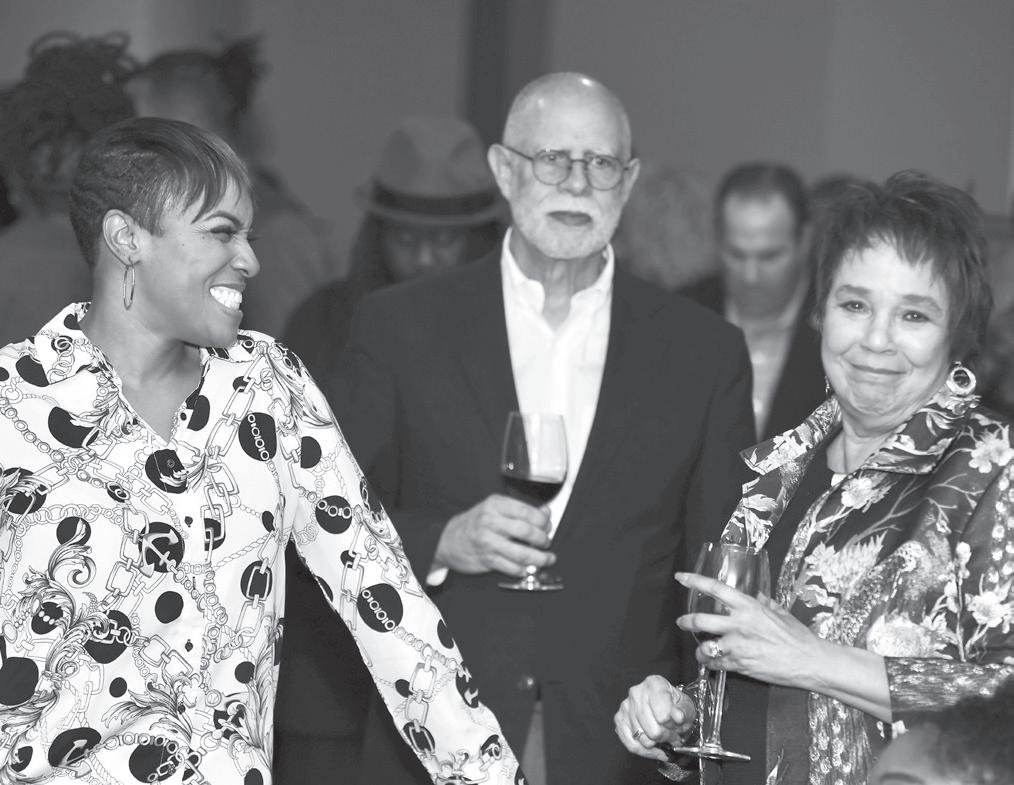
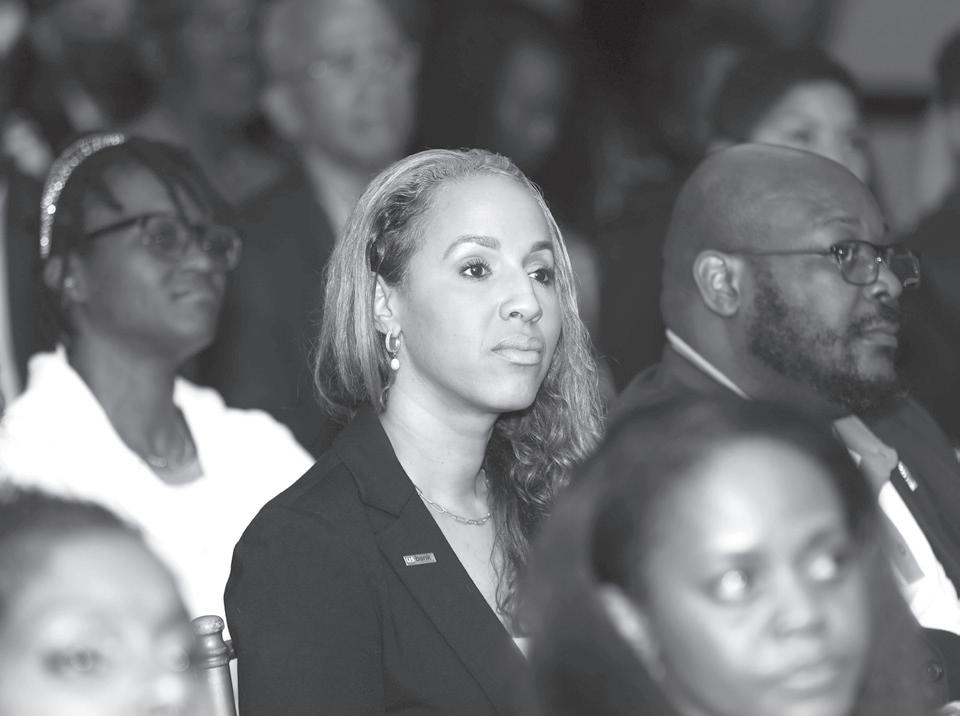


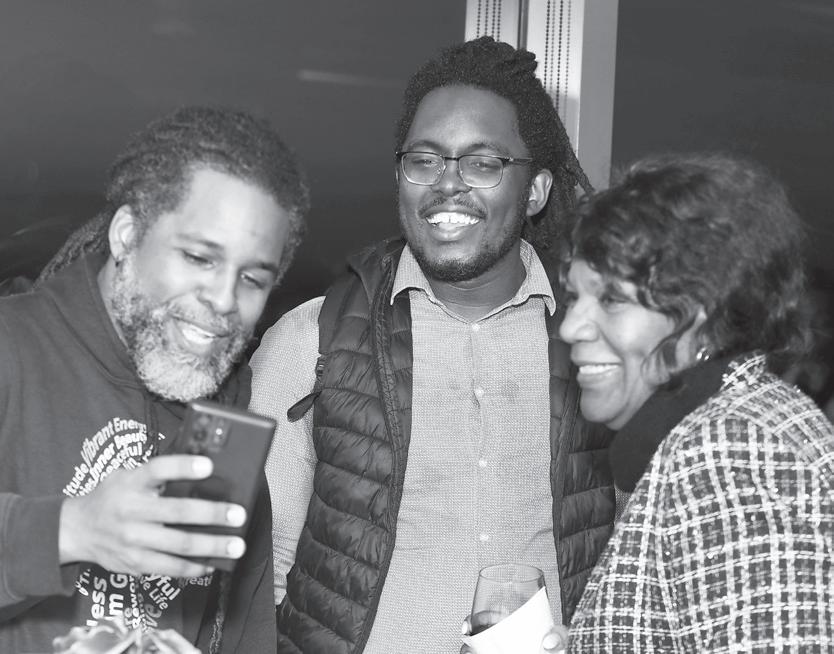

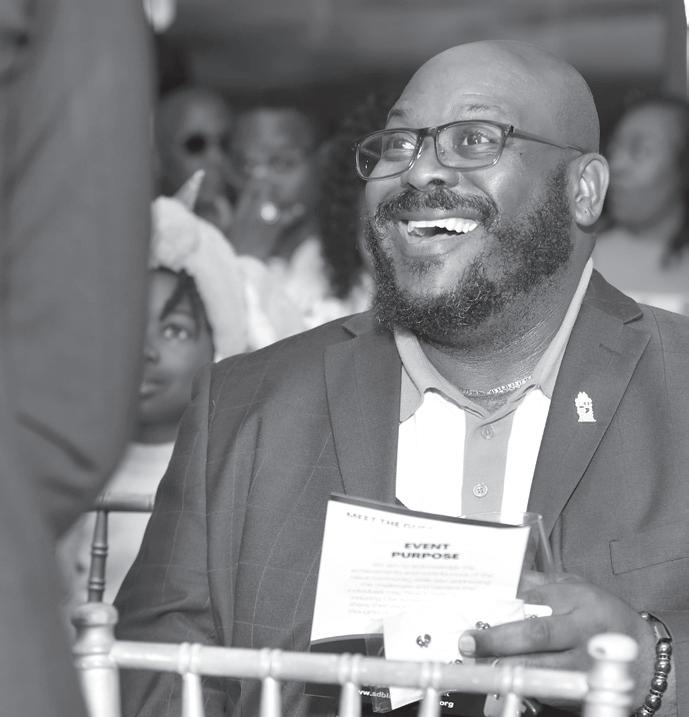
Military spouses sacrifice stable careers and time with loved ones due to constant moves to new duty stations, and hold down the fort at home during their spouses’ deployments. That’s why the USO prioritizes providing community and support to military spouses. Here are some of the ways their programs are making an impact:
• Friendship: USO Coffee Connections are monthly gatherings where military spouses can relax, craft, do yoga, swap advice and go on outings. The goal is building friendships among military spouses. When Jenna King’s husband Tech Sgt. Howard King was forward deployed to Poland with less than 24 hours’ notice, she says she found a home away from home at USO Lakenheath in the U.K., which has been hosting Coffee Connections since the war in Ukraine began. Because of the warm welcome and sense of community she found there, she and her children visit the center often. “There’s something for each of us here,” she said. “Being overseas, friends who are like family are the biggest blessing. And you can’t turn down free coffee and snacks!”
• S upport for new parents: Military parents are often away from family and friends during their pregnancies and first months as new parents. USO Special Delivery presented by Johnson’s are baby showers that provide a touch of home. They allow expectant parents
and military spouses to connect and bond, and 72% of participants this year have stated in feedback surveys that this is the only baby shower they will receive. More than 20,000 parents have been served through this program since its 2013 launch, including 1st Lt. Erika Pearson, an active-duty service member in the Air Force. She knew her spouse, 1st Lt. Drew Pearson, could potentially be deployed around her due date. “The USO helped me make friends that I could rely on if my husband were to miss the birth, and offered me resources I could reach out to, if needed,” says 1st Lt. Pearson.
• P rofessional development: Because of frequent relocations, military spouses often have trouble finding their professional footing. That’s where the USO can step in. Connecting service members and military spouses to resources that focus on employment, education, financial readiness, mentorship and veterans benefits, the USO Transition Program helps military families build a roadmap to achieve their goals and positions them for success throughout the duration of their service, as well as in their post-military life.
• Support while solo-parenting: The burden of solo-parenting can become especially apparent during deployments, when military family members must struggle to find a new normal. For Tessa Michaelson Schmidt, con -
 By Aziah Siid
By Aziah Siid
nection with her husband Brett, a lieutenant colonel in the U.S. Army Reserve, became complicated when he was deployed to Kuwait where there is an eight-hour time difference, unreliable Wi-Fi on base, and the added pressure of being deployed near the frontlines. Because they and their two children have an incredible passion for reading, the USO Reading Program has been a blessing. Deployed service members can record themselves reading a book to their child. Then, the recording and a copy of the book are sent to that service member’s family.
“They have a real response when they hear his voice, and then we get the books in the mail, and they know they’re books from daddy,” says Schmidt, who explained that her children will often watch the videos of their father just before bed, so that in a way, he is present for story time.
The life of a military spouse is undeniably challenging. By the USO fostering community and providing sources of connection, military spouses can feel supported and empowered.
Statepoint


In the 1980s and 1990s, words like “fresh,” “def,” “out of pocket,” “get crunk,” and “ill” rolled off the tongues of youths. Whether they were spitting lyrics of a song, talking about their latest kicks, or simply sharing how they were feeling at the moment, most people knew exactly what message these young people were trying to get across at that moment.
Indeed, one teacher’s list of words prohibited in her classroom — and banned from being used in assignments — has gone viral on social media. It’s unclear where the list originated, but with tens of millions of views, it has sparked plenty of debate on whether it supports student learning, or is just another form of shaming Black students and culture, and playing respectability politics.
Aside from the much-needed conversation about getting students academically on grade level, while ensuring culturally relevant teaching is happening in the classroom, it begs the question: is this teacher right or wrong for this list of language rules if they’re a part of these students’ lived reality?
“Please know using slang in an academic setting can diminish your capability to become a success -
ful writer,” the teacher wrote as the header for the list. “More often than not, the way you speak is the way you write…This is an educational institution, and you will carry yourself as scholars in my classroom!”
If students are heard or seen using the words, they are required to write a short essay explaining why it was appropriate to use the word in an academic setting. Journalist and media personality Jemele Hill shared the post on Instagram on Sunday, and thousands of people have since weighed in on the topic.
“Educators have told me that students are writing papers like they text and talk to their friends, and that basic sentence structure — noun, verb, subject, predicate — isn’t being taught,” Hill wrote in her post. “This generation of students and even Gen Z’ers are struggling with writing… Now there isn’t one way to write and certainly not one way to talk, but if these kids will eventually be [in] professional environments where these phrases can be frowned upon, is it good to start creating these habits at a young age?”
An Expression of Genius or Code Switching?
Ernest Crim, former veteran classroom teacher and Tik Tok star, responded to the post mentioning the genius behind how colloquial terms are frowned upon at one
point, but words like “Period” find their way into the Urban Dictionary due to how impactful it is.
“There’s a level of genius in how each generation of youth communicates. How about helping them find alternatives to those words or phrases?” Crim wrote. “The same words/phrases we/they demonize today get added to the dictionary tomorrow… Is it okay then? We don’t need their permission to create language, especially as people who created hip hop. This can be a valuable teaching tool for our kids about linguistic ingenuity.”
Popularly known for their slang phrases like, “get me lit,” and “it’s brick,” one former Brooklyn high school teacher, Sabrina Thompson, related all too well to the need to monitor students’ language, while also allowing them to be free.
The former teacher went on to address the achievement gap that she saw during her time as an educator, which continues to be a rising concern, particularly as students try to recover from time spent learning remotely.“I had 18 and 19 year old’s entering my class in gen ed reading on 1st and 2nd grade levels though,” she wrote. “So many people had let these kids down well before they were “promoted” and sent to me.”
This article originally appeared on Word in Black.
The latest versions of COVID-19 vaccines were 54% effective at preventing symptomatic infection in adults, according to the first U.S. study to assess how well the shots work. The shots became available last year and were designed to better protect against more recent coronavirus variants.
In the February 1st study, the Centers for Disease Control and Prevention looked at 9,000 people who got tested for COVID-19 at CVS and Walgreens pharmacies, checking who tested positive and whether they had gotten a new shot or not.
The 54% finding is similar to what's been reported in other countries, and it's also
about what was reported for an earlier vaccine version, said Ruth LinkGelles of the CDC, the study's lead author. Studies coming out later this year will assess how effective the shot was at preventing symptoms severe enough to send patients to a doctor's office or hospital, she said.
The CDC recommends the new shots for everyone 6 months and older, but most Americans haven't gotten them. The latest CDC data suggests only about 22% of U.S. adults have gotten the shots, and only 11% of children. The slow uptake meant that it took longer for researchers to gather enough data to assess how well the shots work, Link-Gelles said.



Saturday the 24th marked the 67th opening day ceremony for Little League Baseball at Sunshines Berardini Field located at 44402 Federal Blvd, representing District 33.
The ballpark had a carnival and family reunion-like atmosphere with inflatable jumpers, food, face painting, and excitable laughter with plenty of high fives and hugs.
After the introductions, inspiring speeches and pledge's, it was time to make the 2024 season official.
"I played here as a kid and it was a fun experience. I can tell that my son is having a good time running around and making friends. I don't pressure him to play, just have some fun and be a good teammate, and if he learns something, that's cool too, " Sunshine alumni and parent Terrell Cloud shared.
There definitely appeared to be a significant amount of fun going on last Saturday mixed with glimpses of talent at Sunshine's Berardini Field to start the brand new season.

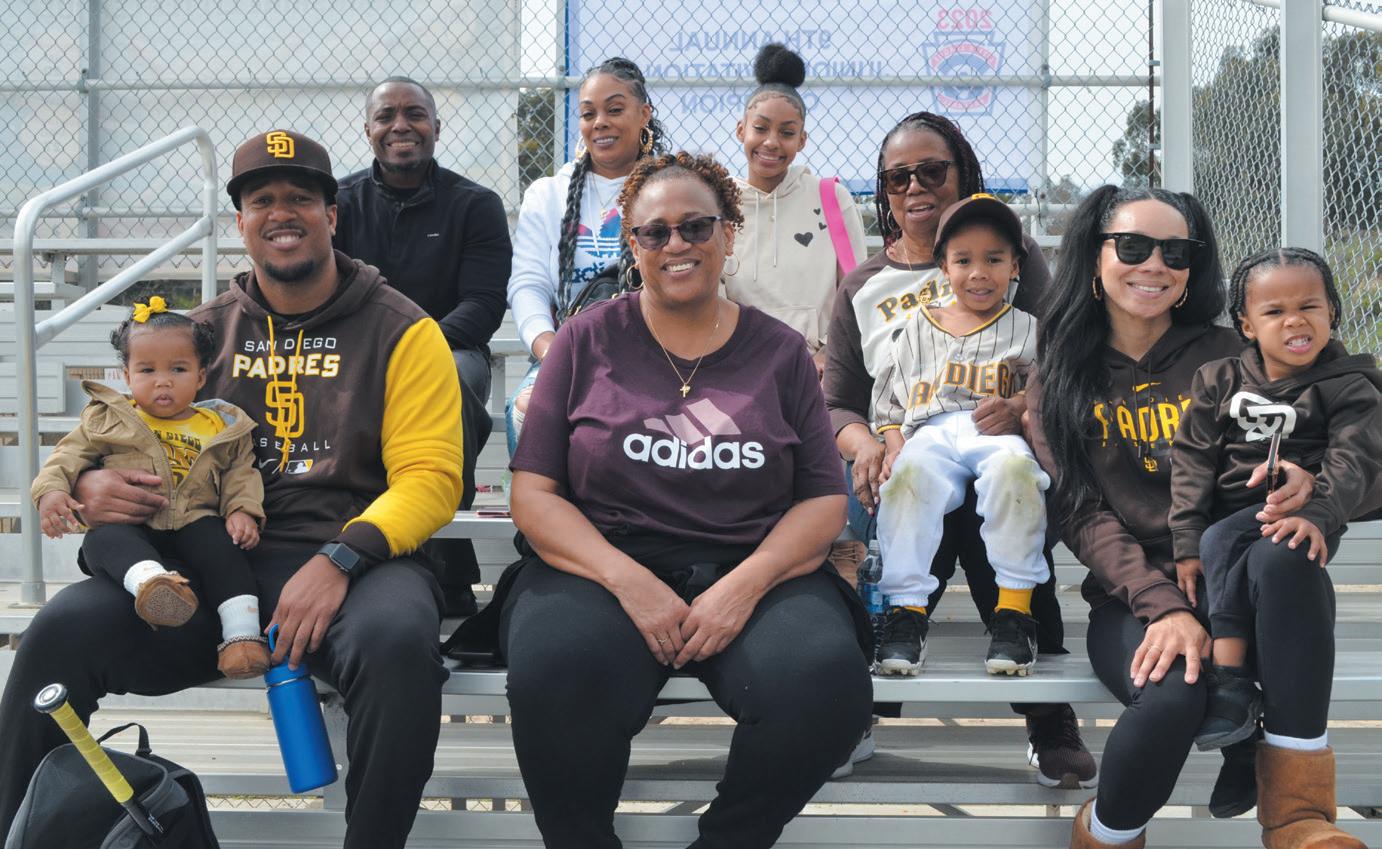



















THOSE NOT LISTED WERE NOT ENDORSED
The following is a list of endorsements for the March 5, 2024 primary election. These names are only listed as suggestions based on our observations and knowledge of the candidates. You, as the readers, are encouraged to make up your own minds. The important thing is that you vote and that you understand the importance of your vote. You should not vote for people you have no knowledge of. Those who care about our vote should be making efforts to inform you as to why you should vote for them. This list will appear on our website as well.
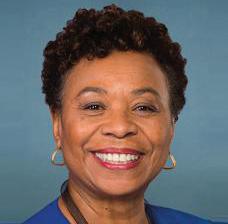
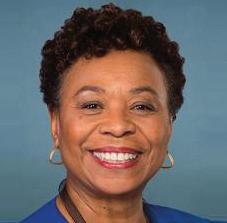



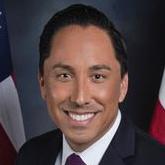

•
•
•
•

Prop 1 - Authorizes 6.38 Billion In Bonds To Build Mental Health Treatment Facilities For Those With Mental Health And Substance Use Challenges; Provides Housing For The Homeless. Legislative Statue. Amends Mental Health Services Act to provide additional behavioral health services. Fiscal Impact: Shift roughly $140 million annually of existing tax revenue for mental health, drug, and alcohol treatment from counties to the state. Increased state bond repayment costs of $310 million annually for 30 years.
SEE PAGE 11 TO FIND A VOTING CENTER NEAR YOU!





Tips for California’s Military and Overseas Voters
Dates to remember: February 20: Last day to register to vote for the Presidential Primary Election February 21 – March 5: Same Day Registration is available. You may “conditionally” register and vote a provisional ballot during this time.** • February 27: Update or change how you want to receive your ballot •
*If you are living outside the territorial limits of the United States or are called for military service within the United States on or after the seventh day prior to the date of the election, you may return your ballot by fax. If you meet the requirements to return your ballot by fax, you must also fax the Oath of Voter form (available from your county elections official) waiving your right to a confidential ballot.
**Contact your county elections official for more information. For more information, contact: CALIFORNIA SECRETARY OF STATE (800) 345-VOTE. Visit www.sos.ca.gov or mov@sos.ca.gov. FEDERAL VOTING ASSISTANCE PROGRAM info: Call (800) 438-VOTE or visit www.fvap.gov

CHULA
CHULA
LA

In an exclusive interview with the Black Press of America’s Let It Be Known morning show, Ziggy Marley, the son of reggae legend Bob Marley, opened up about the profound impact of the hit new movie “Bob Marley, One Love.” Beyond its role as a cinematic journey into the iconic musician’s life, the film has emerged as a catalyst for transformative change, touching the lives of individuals and communities in Jamaica and extending its positive influence beyond geographical boundaries. The 30-minute discussion delved into the meticulous process of selecting collaborators for the movie, with Ziggy Marley emphasizing the importance of humility and a community-focused approach. The quest for authenticity in portraying Bob Marley’s life meant assembling a team that “res-
pected the culture, ensuring a collective effort devoid of individual egos,” Marley asserted.
The oldest son of the reggae legend provided a thoughtful reflection on the emotional and psychological impact of the threats and challenges his father faced. He highlighted the challenge of balancing honesty and entertainment in depicting the life of a cultural icon, shedding light on the reflective character portrayed in the film.
Marley also discussed the movie’s impact on Jamaica, including its commercial success, job opportunities, and charitable contributions to the communities where it was filmed. He shared insights into the timing and inspiration for the film, underscoring the spiritual lineage of Bob Marley’s music and its relevance in promoting unity and love in today’s world.
Expanding on the positive outcomes of the film, Marley provided detailed
accounts of the tangible benefits reaped by local communities. The studio behind the film spearheaded the construction of a new outdoor pavilion at a school aimed at providing a conducive learning environment for children during hot summers, which stood out as a significant accomplishment.
Moreover, the film’s production team played a pivotal role in fostering economic growth, generating employment opportunities, and catalyzing the opening of shops and stores within the community. Ziggy expressed his joy at witnessing the positive transformation, noting that the film brought economic prosperity and a tangible sense of peace to the once tumultuous community.
The timing of the film’s release became a focal point of discussion, with Ziggy highlighting that it wasn’t a premeditated decision but a response to the present moment. Despite difficulties like strikes that caused delays, Ziggy emphasized
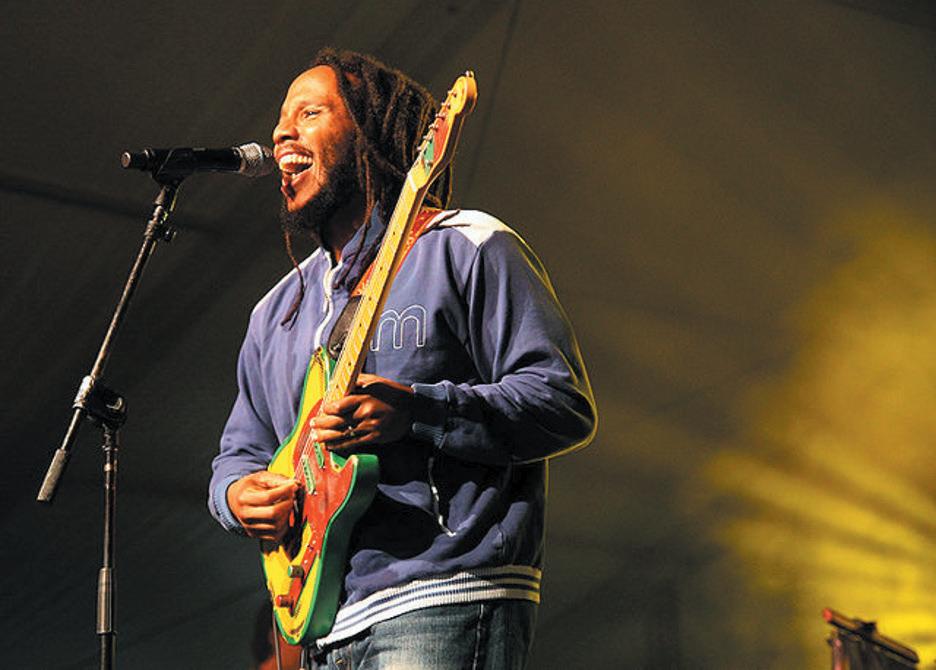
the family’s trust in the universe’s timing as they explored the idea of making a movie about Bob Marley.
In essence, “Bob Marley, One Love” transcends its cinematic role, be-
The Arizona Republic published a piece titled, “How Black History Month Came to Be” this month that was written by Amaris Encinas of USA TODAY. The article focused on the month-long commemoration created to reflect on the past, acknowledge the continued struggle for racial justice and draw inspiration
from the achievements of African Americans.
Dr. Carter G. Woodson conceived the idea of “Negro History Week” in 1926. The weeklong event officially became Black History Month in 1976. Black History Month has been celebrated in the United States every February since.
In the game of golf there is also a history
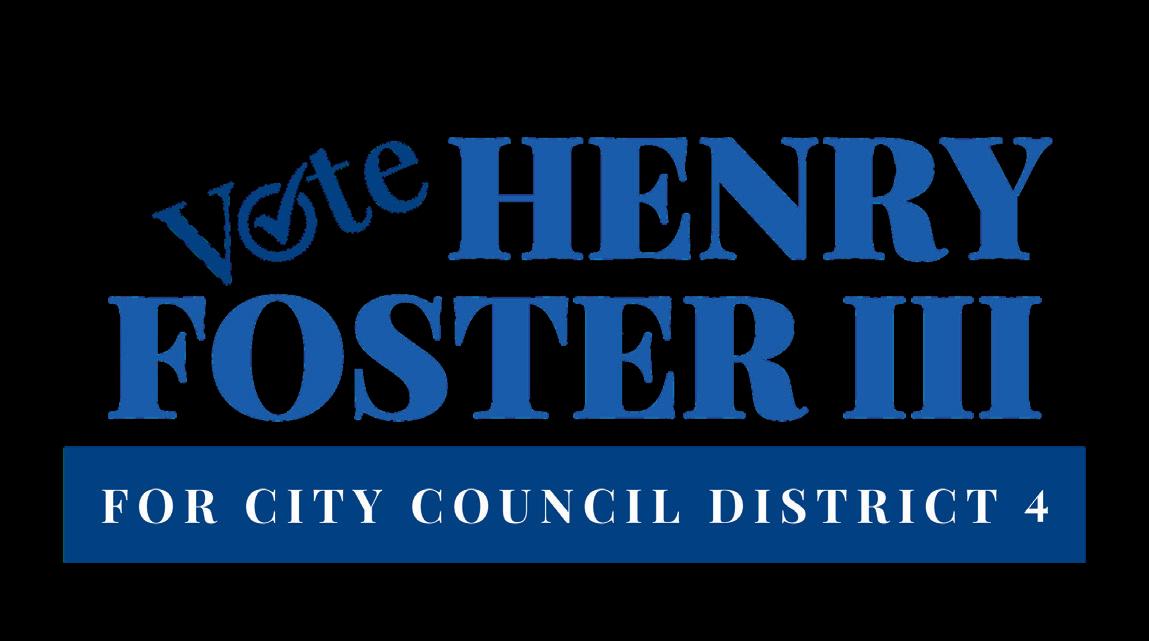









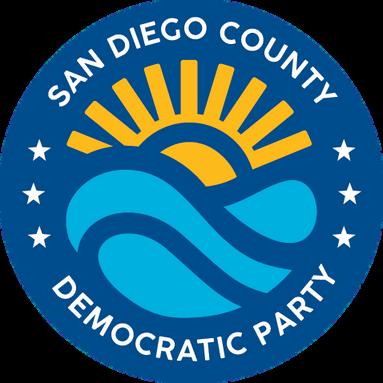
coming a symbol of positive change and community development and a testament to the enduring legacy of Bob Marley, resonating far beyond the realms of the silver screen.

timeline filled with events that were chronicled and have a place in history. Here are a few:
• I n 1896, John Shippen became the first Black golfer to play in the U.S. Open at Shinnecock Hills where he worked as a caddie at the age of 17. He tied for sixth place and won $10.00. Shippen is the first Black Golf Professional.
• I n 1899, Dr. George Grant, a dentist invented the modern wooden golf tee.
• I n 1922, Joseph Bartholomew began his career as a golf course architect by creating a new course at Metairie GC in his native New Orleans. Because of the color of his skin, Bartholomew was never allowed to play the course because of racist practices.
• I n 1926, the same year that Black History Week was established, Robert Hawkins held his first tournament for Black golfers and in 1928 he created the United Golf Association which provided a place for golfers who were excluded from PGA events because of the color of their skin.
• I n 1939, Clyde Martin was named head pro at Langston, a segregated golf course, in Washington, D.C.
• In 1946, William Powell, with aid from two Black doctors and his brother, began building Clearview GC in East Canton, Ohio. The nine-hole course was opened in 1948 and Powell became the first Black to build, own and operate a golf course. Another nine holes were added to the site in 1978.
• In 1948, Bill Spiller began his fight against racist practices by the PGA Tour that wouldn’t allow Black golfers to participate. That same year, Teddy Rhodes became the second Black golfer to compete in the U.S. Open Championship that was held at Riviera CC in Pacific Palisades, CA.
• I n 1956, Ann Gregory became the first Black female to enter the U.S. Women’s Amateur.
• I n 1957, Charlie Sifford won the Long Beach Open, an event co-sponsored by the PGA and in 1961 became the first Black
player to earn a PGA TOUR card after the “Caucasian Only” clause was struck from the bylaws. He went on to win the 1967 Greater Hartford Open and the 1969 LA Open, both PGA TOUR events. Sifford became the first Black golfer inducted into the World Golf Hall of Fame in 2004 and in 2009 the Northern Trust Open created the “Charlie Sifford Exemption” specifically to increase diversity in the game. Today the event is the Genesis Open hosted by Tiger Woods.
• I n 1963, Althea Gibson became the first Black to compete on the LPGA Tour.
• In 1964, Pete Brown became the first Black golfer to win a PGA-sanctioned event, the Waco-Turner Open. In 1970 he went to the winner’s circle after winning the Andy Williams Open in San Diego.
• I n 1967, Lee Elder earned his PGA Tour card after finishing 9th out of a class of 122 golfers. He began playing the tour in 1968 and in 1974 won his first tour event, the Monsanto Open. After the win Elder received and accepted an invitation to play in the 1975 Masters. He was the first Black golfer to be invited. In 1979, Elder was a Ryder Cup participant, another first for the storied golfer.
• In 1975, Calvin Peete joined the PGA Tour and distinguished himself by becoming one of the most consistent golfers ever. Peete had 12 tour wins in his career and led in driving accuracy for ten straight years, 1981-90. His greatest accomplishment was winning the PLAYERS Championship in 1985. Peete was the second Black golfer to participate on the U.S. Ryder Cup Team in 1983 and 1985.
• In 1986, Harold Dunovant established the National Black Golfer’s Hall of Fame. That same year, the Minority Collegiate Golf Championship was established to elevate the game for primarily minority colleges and universities because the schools were denied opportunities to compete in NCAA collegiate events.

Ac onstitutional conflict threatening the normally peaceful nation of Senegal has stumped Africawatchers around the world, more accustomed to the nation’s popular beaches and cliffs, vibrant markets and glittering nightlife.

Beneath the peaceful exterior, however, discontent has been brewing since Senegalese President Macky Sall canceled the February 25 elections in violation of the constitution.
His unilateral action prompted young people to take to the streets, hurling stones at gendarmes and dodging police teargas instead of attending class.
“There is no justice here,” said a 22-year old demonstrator speaking to a news reporter. He declined to give his full name because “we’re living in a dictatorship. I’m crying inside. My heart is bruised.”
The U.S. State Dept has reportedly agreed with the opposition, saying the move to delay the vote “cannot be considered legitimate.”
“Press freedom is vital to a functioning democracy.”
–The International Women’s Media Foundation
Since taking office in 2012, President Macky Sall has cracked down on press freedom, jailed journalists and political opponents and altered the constitution. Observers say he is holding his seat open for Prime Minister Amadou Ba, a favorite of the current ruling party.
Ba – a former tax inspector – has served as prime minister since September 2022 and previously held the key ministries of foreign affairs and finance.
Speaking at a ceremony in a Dakar hotel attended by the ruling party and its allies, Ba announced: "I am honored to tell you that I accept to be your candidate."
But this week, news trickling down from the top election authority hints that Macky Sall may be overridden, that his rescheduling the vote till December has been declared null and void.
In Dakar, people cheered the news. Since gaining independence in 1960, no presidential poll has ever been postponed in Senegal.
Meanwhile, popular opposition leader Ousmane Sonko is still in election limbo since he was disqualified for a period of five years after a conviction for defamation.
His party, The African Patriots of Senegal for Work, Ethics and Fraternity, which authorities dissolved last year, called the disqualification “the most dangerous precedent in the history of Senegal.”
Also ruled ineligible was Karim Wade, son of former Senegalese President Abdoulaye Wade for holding dual citizenship, and Rose Wardini, a gynecologist, among others.
Angela Quintal, head of the Africa program with the Committee of Protect Journalists based in New York, criticized Senegalese authorities for throwing tear gas at journalists to prevent them for reporting. “Police should be working to protect the press, not attacking and throwing tear gas at journalists to prevent them from reporting on political demonstrations,” she said.
“They seem to be willing to stop any news coverage they don’t like.”
In a separate incident on Feb. 9, police fired teargas at Walf TV, suspending them for a month for covering ongoing protests. Police claimed the channel “constantly” broadcasted violent images about teenagers joining the protests while they aired “subversive, hateful and dangerous statements” which incited violence and undermined state security.
The International Women’s Media Foundation (IWMF) has also called on Senegalese police to protect journalists covering election protests and respect the public’s right to information.
“Press freedom is vital to a functioning democracy,” they said. “Reporters must be able to cover these elections safely and accurately without fear of retribution.”

Hundreds of women dressed in black gathered in Kenya’s capital this week at a vigil dubbed "Dark Valentine" to protest the rise in femicides in the country.
More than 16 cases were reported by police and local media since the start of the year.
"We are losing so many women, so many girls,” said Merlin Kawira, a student and founder of an on-campus mental health support group call Africa Arts and Mental Talks. “So today most of us have come here to ensure that we end femicide."
On a day traditional for celebrating love, students gathered to remember the victims of femicide by lighting candles, chanting names of those killed and holding red roses.
The Valentine's Day protest comes on the heels of a march last month when thousands took to the streets calling for an end to the scourge and for Kenya’s notoriously backlogged justice system to deal seriously with domestic violence.
Grace Wangari, age 24, is one of 16 Kenyan women who died allegedly at the hands of their partners since the start of 2024.
Last month, 26-year-old Starlet Wahu was stabbed to death by a man alleged to be part of an extortionist criminal ring that targets women through dating sites.
Less than two weeks later, another woman was drugged and dismembered by a man she had arranged to meet in a rented flat, with her body discarded in plastic bags.
This week’s vigils are expected to be the country’s largest commemoration yet of the victims of gender-based violence.
Kelvin Kiptum, a superstar of long distance running and the first man to run the marathon in under 2 hours, died tragically in a late night car crash in western Kenya.
He died along with his coach, Gervais Hakizimana, when he veered off the road into a ditch and hit a large tree, the authorities said. He and Hakizimana were killed instantly. A third person in the car, Sharon Kosgei, was injured. Kiptum was 24 years old.
His record of world records began with his first marathon in Valencia, Spain, in 2022, with a winning time of 2:01:53. At the London Marathon in 2023, he crushed the field to win in 2:01:25, the second-fastest time in history, 16 seconds short of the world record of 2:01:09 held by Eliud Kipchoge, also of Kenya. Finally, he broke a new world record at the Chicago Marathon, obliterating the world record with a score of 2:00:35 Kiptum was born on Dec. 2, 1999,
“An incredible athlete leaving an incredible legacy, we will miss him dearly.”
–Sebastian Coe
in Chepsamo, Kenya. As a young man, he worked as a goat herder and trained as an electrician before deciding to become a runner.
In an interview with the BBC, coach Hakizimana recalled the little boy herding livestock barefoot.
“It was in 2009, I was training near his father’s farm, he’d come kicking at my heels, and I would chase him away.”
News of Kiptum’s death brought tributes from Kenya, throughout Africa and across the world of road running. William Ruto, Kenya’s president, wrote on X, formerly Twitter: “Kiptum was our future.
An extraordinary sportsman has left an extraordinary mark in the globe.”
Kiptum’s victories came at a time
when nearly 300 athletes from Kenya were being punished for using banned substances, tarnishing the country’s image as a running powerhouse.
As a result, the 23-year-old recordholder — who has not been accused of doping — found himself defending not only what he had done in Chicago, but what he had not. His record time, he said, was the product of running 150 miles or more per week at altitude, not the use of banned substances.
“My secret is training,” he said. “Not any other thing.”
World Athletics president Sebastian Coe offered his condolences.
“We are shocked and deeply saddened to learn of the devastating loss of Kelvin Kiptum and his coach,” he wrote. “An incredible athlete leaving an incredible legacy, we will miss him dearly.”, Kiptum’s survivors include his wife and two children.
Meanwhile, in Cairo, around 10,000 runners participated in a Run for Gaza marathon. Ticket sales will be
“The reality of any woman living in this country [is] you always live under the banner of fear, because we’ve grown up with this. It’s ahistorical to say it’s a recent spark that has sent people over the edge,” says Muthoni Maingi, one of the conveners of the nationwide protests.
Hashtags like #WeAreNotSafe, #StopKillingWomen and #EndFemicideKE are trending in Kenya.
They reflect an intense national debate over a series of murders that have rocked the country. In the month of January, 30 women were murdered, according to data compiled by the grassroots organization Usikimye (Swahili for "don't be silent"), whose mission is to end gender-based violence, working with other feminist and human rights groups.
The Kenya Police Service does not track murders by gender.
Grace Wangari’s mother said she was haunted by recent discoveries about her daughter’s life. She recalls with sadness how she had promised to send her money to move to a new apartment. Wangari had two daughters, who now live with Susan Wairimu. As she watches her granddaughters play, Wairimu wonders if things could have played out differently.
At least 500 femicide cases have been recorded in Kenya since 2016. A majority of the killings follow systematic domestic violence, according to the platform Africa data hub, which says femicide cases are probably heavily under-reported and miscategorized, due to inadequate coverage.
“We are holding the vigils to remind the country that in [what are supposed to be] circumstances of safety and love, a lot of women meet their demise,” says Maingi.

used for much needed humanitarian aid for the people in the Gaza Strip. Runners from 30 different countries took part, with French participant Lauren Cocula telling the AP news: "If we don't save people in Gaza, we are going to just fail humanity as humans so I think it
is important.”
The event was organized by Egyptian minister of Social Solidarity Nevin Al-Qabbaj in cooperation with the Egyptian Tribal and Families Council, the Minister of Environment Yasmine Fouad and the Minister of Youth and Sports.



Valerievna Reid
To All Interested Persons:
Petitioner
Victoria Valerievna
Ramkulova aka Victoria Valerievna Reid filed a petition with this court for a decree changing names as follows:
PRESENT NAME:
Victoria Valerievna
Ramkulova aka Victoria Valerievna Reid
PROPOSED NAME: Victoria Valerievna Reid
THE COURT ORDERS that all persons interested in this matter appear before this court at the hearing indicated below to show cause, if any, why the petition for change of name should not be granted. Any person objecting to the name changes described above must file a written objection that includes the reasons for the objection at least two court days before the matter is scheduled to be heard and must appear at the hearing to show cause why the petition should not be granted. If no written objection is timely filed, the court may grant the petition without a hearing.
NOTICE OF HEARING
Date: March 26, 2024 Time: 8:30 A.M.
Dept. C-61
(To appear remotely, check in advance of the hearing for information about how to do so on the court's website. To find your court's website go to www.courts.ca.gov/find-mycourt.htm)
NO HEARING WILL OCCUR ON THE DATE SPECIFIED IN THE ORDER TO SHOW CAUSE.
The court will review the documents filed as of the date specified on the Order to Show Cause for Change of Name (JC Form #NC-120).
If all requirements for a name change have been met as of the date specified, and no timely written objection has been received (required at least two court days before the date specified), the Petition for Change of Name (JC Form #NC-100) will be granted without a hearing. One copy of the Order Granting the Petition will be mailed to the petitioner.
To change a name on a legal document, including a birth certificate, social security card, driver license, passport, and other identification, a certified copy of Decree Changing Name (JC Form #NC-130) or Decree Changing Name and Order Recognizing Change of Gender and for Issuance of New
signing parent, and proof of service must be filed with the court.
The address of the court is:
330 West Broadway San Diego, CA 92101 2/15, 2/22, 2/29, 3/7
SUPERIOR COURT OF CALIFORNIA
330 West Broadway San Diego, CA 92101 Hall of Justice Courthouse 37-2024-00005875CU-PT-CTL
Petitioner or Attorney:
Estrella Soto AKA Estrella Gastelum-Soto
To All Interested Persons: Petitioner
Estrella Soto AKA Estrella Gastelum-Soto filed a petition with this court for a decree changing names as follows:
PRESENT NAME:
Estrella Soto AKA Estrella Gastelum-Soto
PROPOSED NAME:
Estrella Gastelum
THE COURT ORDERS that all persons interested in this matter appear before this court at the hearing indicated below to show cause, if any, why the petition for change of name should not be granted. Any person objecting to the name changes described above must file a written objection that includes the reasons for the objection at least two court days before the matter is scheduled to be heard and must appear at the hearing to show cause why the petition should not be granted. If no written objection is timely filed, the court may grant the petition without a hearing.
NOTICE OF HEARING
Date: March 25, 2024 Time: 8:30 A.M. Dept. 61
(To appear remotely, check in advance of the hearing for information about how to do so on the court's website. To find your court's website go to www.courts.ca.gov/find-mycourt.htm)
NO HEARING WILL OCCUR ON THE DATE SPECIFIED IN THE ORDER TO SHOW CAUSE.
The court will review the documents filed as of the date specified on the Order to Show Cause for Change of Name (JC Form #NC-120).
If all requirements for a name change have been met as of the date specified, and no timely written objection has been received (required at least two court days before the date specified), the Petition for Change of Name (JC Form #NC-100) will be granted without a hearing. One copy of the Order Granting the Petition will be mailed to the petitioner.
To change a name on a legal document, including a birth certificate, social security card, driver license, passport, and other identification, a certified copy of Decree
Changing Name (JC Form #NC-130) or Decree
Changing Name and Order
Recognizing Change of Gender and for Issuance of New Birth Certificate (JC Form #NC-230) may be required. Contact the agency(ies) who issue the legal document that needs to be changed, to determine if a certified copy is required.
A certified copy of Decree
Changing Name (JC Form #NC-130) or Decree
Changing Name and Order
Recognizing Change of Gender and for Issuance of New Birth Certificate (JC Form #NC-230) may be obtained from the Civil Business Office for a fee. Petitioners who are seeking a change of name under the Safe at Home program may contact the assigned department for the information on obtaining certified copies.
If all the requirements have not been met
SUPERIOR COURT OF CALIFORNIA
330 W. Broadway San Diego, CA 92101 Central Division Hall Of Justice
37-2024-00002000CU-PT-CTL Petitioner or Attorney: Nguyen Nhu Le On Behalf Of Minor Child
To All Interested Persons: Petitioner Nguyen Nhu Le On Behalf Of Minor Child filed a petition with this court for a decree changing names as follows:
PRESENT NAME: Le Tung Quan Nguyen
PROPOSED NAME: Quan Tung Nguyen
THE COURT ORDERS that all persons interested in this matter appear before this court at the hearing indicated below to show cause, if any, why the petition for change of name should not be granted. Any person objecting to the name changes described above must file a written objection that includes the reasons for the objection at least two court days before the matter is scheduled to be heard and must appear at the hearing to show cause why the petition should not be granted. If no written objection is timely filed, the court may grant the petition without a hearing.
NOTICE OF HEARING
Date: March 04, 2024 Time: 8:30 A.M. Dept. 61
(To appear remotely, check in advance of the hearing for information about how to do so on the court's website. To find your court's website go to www.courts.ca.gov/find-mycourt.htm)
NO HEARING WILL OCCUR ON THE DATE
is filed, the court will set a hearing date and contact the parties by mail with further directions.
A RESPONDENT OBJECTING TO THE NAME CHANGE MUST FILE A WRITTEN OBJECTION AT LEAST TWO COURT DAYS (excluding weekends and holidays) BEFORE THE DATE SPECIFIED. Do not come to court on the
date. The court will notify the parties by mail of a future hearing date
Any Petition for the name change of a minor that is signed by only one parent must have this Attachment served along with the Petition and Order to Show Cause, on the other nonsigning parent, and proof of service must be filed with the court.
The address of the court is: 330 W. Broadway San Diego, CA 92101 2/08, 2/15, 2/22, 2/29
NOTICE OF PETITION TO
ADMINISTER ESTATE OF Juliet Rosen Case Number: 24PE000012C
To all heirs, beneficiaries, creditors, contingent creditors, and persons who may otherwise be interested in the will or estate, or both, of Juliet Robertson; Juliet Rosen
A Petition for Probate has been filed by Dara Haskell in the Superior Court of California, County of San Diego
The Petition for Probate requests that Dara Haskell be appointed as personal representative to administer the estate of the decedent.
The petition requests authority to administer the estate under the Independent Administration of Estates Act.
(This authority will allow the personal representative to take many actions without obtaining court approval. Before taking certain very important actions, however, the personal representative will be required to give notice to interested persons unless they have waived notice or consented to the proposed action.) The independent administration authority will be granted unless an interested person files an objection to the petition and shows good cause why the court should not grant the authority.
A hearing on the petition will be held in this court as follows:
on March 14, 2024, at 1:30 PM in Dept. 503 Room 5th Floor
located at the Superior Court of California County of San Diego
1100 Union Street
San Diego, CA 92101
Central Division Central Courthouse
If you object to the granting of the petition, you should appear at the hearing and state your objections or file written objections with the court before the hearing. Your appearance may be in person or by your attorney.
If you are a creditor or a contingent creditor of the decedent, you must file your claim with the court and mail a copy to the personal representative appointed by
You may examine the file kept by the court.
If you are a person interested in the estate, you may file with the court a REQUEST FOR SPECIAL NOTICE (form DE-154) of the filing of an inventory and appraisal of estate assets or of any petition or account as provided in Probate Code section 1250.
A REQUEST FOR SPECIAL NOTICE form is available from the court clerk.
Petitioner: Dara Haskell 3893 Camino Lindo San Diego, CA 92122 (530) 913-5042 2/22, 2/29, 3/07
NOTICE OF PETITION TO ADMINISTER ESTATE OF Deborah Lynn Schneider
Case Number: 37-2024-00006029-PR-LACTL
To all heirs, beneficiaries,
To
A Petition for Probate has been filed by
Continued from page 2
This overrepresentation of white residents comes at the expense of Hispanic and Asian residents. Nearly 17% of residents in cities are Hispanic and 5% are Asian. But only 6% of mayors are Hispanic and only 2% are Asian.
In medium and large counties where we collected elections data, we made similar comparisons for county executives, county legislators, sheriffs and prosecutors. Again, across these local elected offices, there are far more, as a percentage, white elected officials than there are white residents of these counties.
The
The petition requests authority to administer the estate under the Independent Administration of Estates Act.
(This authority will allow the personal representative to take many actions without obtaining court approval.
Before taking certain very important actions, however, the personal representative will be required to give notice to interested persons unless they have waived notice or consented to the proposed action.) The independent administration authority will be granted unless an interested person files an
The Petition for Probate requests that
Jacob Schneider be appointed as personal representative to administer the
The petition requests authority to administer the estate under the Independent Administration of Estates Act.
(This authority will allow the personal representative to take many actions without obtaining court approval. Before taking certain very important actions, however, the personal representative will be required to give notice to interested persons unless they have waived notice or consented to the proposed action.) The independent administration authority will be granted unless an interested person files an objection to the petition and shows good cause why the court should not grant the authority.
A hearing on the petition will be held in this court as follows: on March 13, 2024, at 1:30 PM in Dept. Probate Room 502 located at the Superior Court of California County of San Diego 1100 Union Street San Diego, CA 92101
Central Division Central Courthouse
If you object to the granting of the petition, you should appear at the hearing and state your objections or file written objections with the court before the hearing. Your appearance may be in person or by your attorney.
If you are a creditor or a contingent creditor of the decedent, you must file your claim with the court and mail a copy to the personal representative appointed by the court within the later of either (1) four months from the date of first issuance of letters to a general personal representative, as defined in
If
Just under 70% of residents of the counties in our data are white. But over 76% of county executives are white, over 85% of county legislators are white, 83% of sheriffs are white, and nearly 89% of prosecutors are white.
Again, the overrepresentation of white residents among local elected officials happens as other racial and ethnic groups are underrepresented in their county governments. Black residents make up 11% of the population in counties in our data, but only 9% of county legislators. And Hispanic and Asian residents are more drastically underrepresented in county offices. In our data, 11% of county residents are Hispanic, while 3% are Asian. But 5% or less of politicians holding office in any county elected position are Hispanic. And Asians make up 1% or less of elected county legislators, sheriffs and prosecutors.
Data on school boards’ representation is less clear because our data collection on school boards was less comprehensive than our data on city and county elections. But the apparent trend among the school districts where we gathered data is similar.
School boards have become a flashpoint for various political efforts, including teaching about race and racism and requests to ban books. And they are substantially more white than the communities they serve.
Less than half of the constituents in the school districts in our data are white, but more than two-thirds of school board members are white. Of the districts in our study, 22% of the residents were Black and 6% were Asian, but just 10% of board members are Black and just 3% are Asian. Hispanic residents, who made up 24% of the population, were more closely represented, but still not equally, with 20% of board members.
What does this mean for representation across the U.S.? Local elected officials make important and often contentious decisions governing the lives of millions of city and county residents. Race and other demographic features of both residents and elected officials do not, by any means, offer a conclusive picture of their respective policy preferences. But the fact that local governments look so different from their residents doesn’t paint a sunny picture of representation in local government.
Continued from page 2
The Black Panthers, a civil rights group, understood this all too well. In the late 1960s, they called upon the American people to take note of the racist California legislature that was passing laws specifically aimed at disarming Black citizens. And just like the KKK, the inspiration for these laws came from an unlikely source: Nazi Germany. The language used in these laws was almost identical to that of the Nazi regime, showing the true intentions behind gun control.
But for some, history seems to repeat itself endlessly. As we see yet again with the rise of hate groups and acts of violence against innocent citizens, the importance of the Second Amendment cannot be understated. It was created to prevent a new government from slipping back into tyranny and to allow individuals to protect what is theirs from any threats.
And yet, even in modern times, there are those who continue to deny African Americans their Second Amendment rights. As prominent lawyer and gun rights commentator Colion Noir stated, “Dr. King would look at me with a bit of confusion as he happily struggled with me…that I, a young Black male living in the heart of the South, whose house was never firebombed and has never received death threats, was granted a concealed handgun license. Yet he who had encountered all of these things was denied.”
It’s time to shed light on the role of the Second Amendment in Black history. To educate ourselves and others on the importance of this amendment in securing not just civil rights, but all rights. Let us not be afraid to speak out and defend the Second Amendment, for it is the one that defends all others. And let us never forget the words of one man who truly understood the power of this amendment: “When you touch the Second Amendment, you can’t become more anti American, because America would not be without her guns.” — Willian Owens, President / Founder at America’s Altar.
Craig J. DeLuz has almost 30 years in public policy and advocacy and is currently President of the Robla School District Board of Trustees.






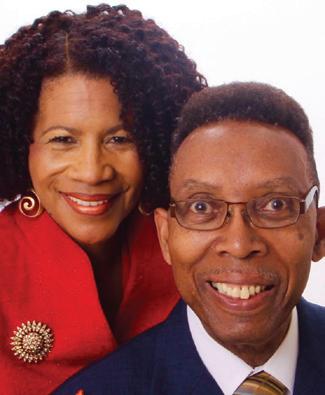

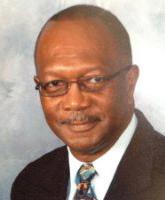

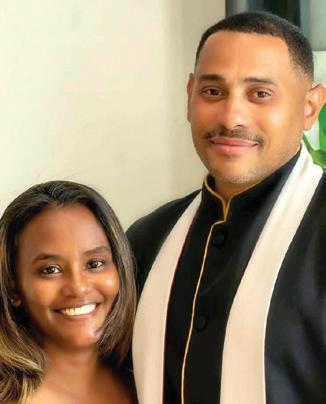

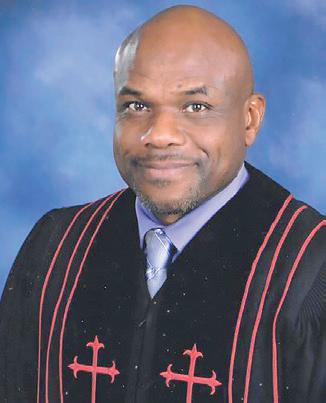
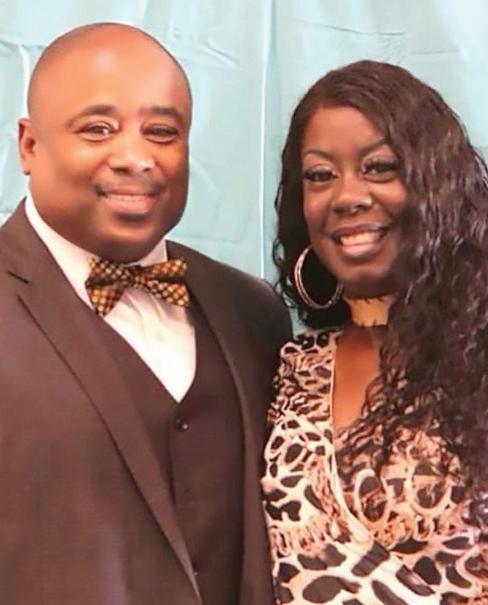




SUNRISE 11/28/1954
SUNSET 02/06/2024
ARRANGEMENTS BY PREFERRED CREMATION & BURIAL
Stanley Earl Cox, Sr. was born on November 28, 1954, in San Diego, California, to Connie Oscar Cox and Lucille Cladys Cox.
Stanley, better known as Bootsy, was a very down to earth, fun loving, and free spirit of a man. From a very young age he enjoyed making people laugh. He got the nickname “Bootsy” due to a pair of cowboy boots his older sister’s bought him for Christmas when he was three years old. He loved those boots so much he would try to wear them to bed. Another brother, Gippy, who has now passed on, started teasing him calling him boots. Stan liked the name Boots so much that when we called him Stanley, he would say, “ I ain’t Danley, my name boots.” We soon went from calling him boots to Bootsy. He loved it. Stanley attended Stockton Elementary School, Memorial Jr. High School, and graduated from Lincoln High School here in San Diego.
Bootsy was the father of three boys, two with Christine Campbell; Stanley Earl, Jr., and Tayari Earl. Little Stan died at four months old and soon after the couple divorced. His third son, Majadi Earl, is with Reba Gordon. Bootsy also has three grandsons.
Bootsy also had several God given talents that he loved to share. He could draw just about anything. He was a great cook, and he loved to sing and dance.
Stanley passed away on February 6, 2024.
Preceding Bootsy in death were his parents; Connie and Lucille Still-Cox, brother Gillespie Cox (Karen), sister and brother-in-law Connie Mae & Vernon Franklin, Sr., sister Arish Bernice Cox, sister Zadie Bell Gilbert, sister & brother-inlaw Robbie & Nolon George, sister-in-law Evone Cook-Cox (Harold Sr), and 3 nephews; Ron Anderson, Henry Cox Jr., and Dorian Franklin. Bootsy is survived by 2 sons; Tayari (Angela) and Majadi, 3 grandsons, 2 brothers; Harold Cox, Sr., and Henry Cox, Sr., 2 sisters; Doris Cox Meshack (Ernie) and Curlis Cox Dockins (JC), special niece and P/T Caregiver Debra Franklin Johnson (Norris). He also leaves a host of nieces, nephews, great and great-great-nieces and nephews and many, many cousins, and other family members. He also leaves 2 honorable god-brothers; Bruce Jenkins and Gary John Williams.
The Lord is close to the brokenhearted and saves those who are crushed in spirit.

Psalm 34:18
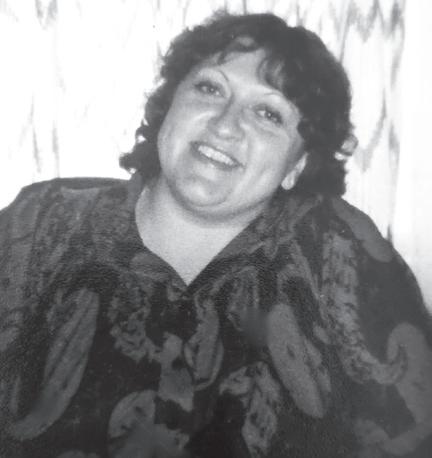
SUNRISE 08/05/1947
SUNSET 01/31/2024
Janie was born on August 5, 1947, in Fremont, Ohio, to Harold and Edna Sieling. She grew up in Ohio with her siblings; Beverly, David, and Judy, until she was 12 years old. In 1959, the family moved to the Clairemont neighborhood of San Diego, California. Janie graduated from Clairemont High School in 1965. In her early adulthood, Janie had two daughters, Angela and Christina. She was a full time mom until her children started school. She then started working as a home health aide. In her thirties, Janie decided to go back to school to further her education. She earned her Master’s Degree in Social Work and built her career with United Healthcare. In her career, Janie touched many lives and left a lasting impact on many clients and colleagues in the field.
Janie was well known for her midwest values of making everything by hand and from scratch. From Christmas cookies to potato salad, Afghan blankets to wedding dresses, she did it all and with such love for the recipient of each project. Janie was happiest when caring for others whether it be family, friends, clients, or complete strangers. To know Janie was to feel cared for and loved.
Janie passed away at home on the morning of January 31, 2024, as a result of a four-year long battle with Non-Hodgkin’s Lymphoma.
Janie has five grandchildren; Adam, Christina, Corrin, Selena, and Lucian, three great-grandchildren; Angelina, Jeannette, and Loyalty, who were her heart and soul. Janie was a hands-on grandma and received such joy from spoiling and spending time with her young grandchildren.


On May 17, 1969, my baby boy Corey Dabrain Atkins was born to Earline Atkins and Ferman Hunt, Jr. in Houston, Texas. Clarence Bailey adopted Corey when he was 2 years old. In 1976, we moved to San Diego, California. At a young age Corey accepted the Lord Jesus Christ. He attended Church of the Lord God under the pastorate of Harvey Jones Sr.
Corey attended Perry Elementary, Marshall Junior High, and graduated from Kearny High School. Corey worked several jobs over the years. His last place of employment was at Pacira for several years.
Corey loved to Bar-B-Que and was beginning to be a great baker. He tried to out bake his mom and made a couple of items after he bet her. He also loved to share his cooking with everyone he encountered and would call and tell you he was bringing you something.
Corey was called home to be with the Lord on January 27, 2024.
Corey was preceded in death by his grandparents; Cliff and Erenstine Atkins, his Aunt Cleo Wallace, and Cordell Bailey.
Left to cherish his memories are his mother and father Earline and Clarence Bailey, two brothers; Darrell Bailey (Angela) and Dale Bailey, two daughters; Felicia Westry (Larry) and Anessah Bailey - aka “Sunshine”, his two sons; Caydin O’Shae Hunt-Bailey and Chimair Hunt-Bailey, his former wife Tara Bailey (the mother of his daughter Aneesah), along with a host of nieces, nephews, three granddaughters, and many friends and love ones.


Our memories build a special bridge when loved ones have to part to help us feel we’re with them still and sooth a grieving heart. Our memories span the years we shared, preserving ties that bind, They build a special bridge of love and bring us peace of mind.





Those we love are never really lost to us we feel them in so many special ways through friends they always cared about and dreams they left behind, in beauty that they added to our days… in words of wisdom we still carry with us and memories that never will be gone… Those we love are never really lost to us For everywhere their special love lives on.



The California Legislative Black Caucus (CLBC) and the California Black Chamber of Commerce (CALBCC) celebrated Black-owned businesses from across the state at its 2024 Legislative Business Brunch, held at the Citizen Hotel in Sacramento on Feb. 12.
The event, part of the CLBC’s Black History Month celebrations, honored the business owners for their outstanding achievements, impact on communities, enduring legacy, and high level of professionalism.
Jay King, CALBCC President and CEO, and CLBC Chair, Assemblymember Lori Wilson (D-Suisun City), and CLBC Vice Chair, Sen. Steven Bradford (D-Inglewood), hosted the event. “I thank each and every one of you for being here for this grand occasion organized to celebrate and honor Black business owners from around the state of California for their hard work, dedication, perseverance, and tenacity,” King said. “These are but a few of the attributes that must be on display at all times for Black business to survive.”
This year’s Black History Month business awardees are: Flawless Cutz and Stylez (Bakersfield); Imperial Electric Service (Fresno); OC Podiatry (Orange); Seashells Realty Group (San Jose); SER Transportation Services (Sacramento);Chez Soul (Fairfield); Beauchamp Distributing Company (Compton); BLK Girl Greenhouse (Oakland); South LA Café (Los Angeles); D.R. Roberts Event Management (Oakland); Sal’s Gumbo Shack (Long Beach); Leading Edge Learning Center (Moreno Valley); Woody’s Bar-BQue (Los Angeles); Urban Roots Brewery and Smokehouses (Sacramento); Detour Hair Studios and Earle’s Restaurant (Inglewood); and Spacebar Café (La Mesa).
All of the awards were presented by King and members of the CLBC.
“As we gather here today, let us reaffirm our collective commitment to fostering an environment where Black businesses can thrive and continue to be meaningful to the economic landscape of California,” said Wilson, the chairperson of CLBC. “We continue to look forward to continuing our collaboration with the California Black Chamber of Commerce and stakeholders dedicated to empowering and uplifting Blackowned businesses.”

One of the oldest Black businesses in the state, WoodsValentine Mortuary of Pasadena, received a special recognition for its longevity and contributions to its community. The mortuary was established by James and Annie Mae Woods in 1928 in the area now known as Old Pasadena.
Fred Valentine and his brothers were employed by the mortuary. Then, in 1958, Valentine and his wife, Arzella J. Valentine, purchased the business and renamed it Woods-Valentine. Mr. Valentine passed away at the age of 98 in 2017. Their daughters Janyce Valentine and Gail Valentine-Taylor now operate the business with their 97-year-old mother, who was present at the brunch.
“I’ve known this family for about 40 years. I am so proud of this family,” said Assemblymember Chris Holden (D-Pasadena), who represents Assembly District (AD) 41 where the WoodsValentine business is located. Holden presented the award to the Valentine family. While growing up, Holden said he learned about the 96-year-old mortuary business through one of the most effective forms of advertising in the Black community: church hand-held cooling Fans.
Holden reflected on how the fans, for decades, were an important medium for information and advertising in Black communities across the United States for businesses like insurance companies, funeral homes, law firms, car dealerships and more.
State Controller Malia M. Cohen was the keynote speaker, and she was presented with the CLBC’s Chair Award. Tara Lynn Gray, the Director of California Office of the Small Business Advocate (CalOSBA), also delivered remarks. Toks Omishakin, California Secretary of Transportation, was a Guest.
King urged the business owners to continue to be exemplars and beacons of hope for other Black entrepreneurs and companies in the state. “The business owners you see here have survived many obstacles and barriers, have been denied access to capital and other necessary resources to succeed, and have been told ‘no,’” King said. “But we say today, ‘thank you’ and ‘we appreciate you,’ with the hopes that they must carry the message: don’t quit and keep pushing.”


 By Damon Carr
By Damon Carr
floating around on social media that states, “I have enough money saved to live comfortably for the rest of my life. If I die by Thursday.”
The average person is grossly under saving for retirement. According to Vanguard’s “How Americans Save 2023” report, the average retirement savings in the U.S. by age are
as follows:
Under age 25 – $5,236
Ages 25-34 – $30,017
Ages 35-44 – $76,354
Ages 45-54 – $142,069
Ages 55-64 – $207,874
Ages 65+ – $232,710
Based on the average retirement saving figures
stated above, are you below average or above average for your age?
In your 20s: This is a great time to start building your savings habit. It’s generally recommended to save at least 10–20 percent of your income, if possible. Additionally, it’s a good idea to work towards building an emergency fund that can cover 3 to 6 months’ worth of living expenses.
By age 30: Aim to have saved the equivalent of your annual salary in a retirement account. This can include contributions to employer-sponsored plans like 401(k)s or individual retirement accounts (IRAs). If you’re 30 years old, earning $45,000 per year, you’d want to have approximately $45,000 saved for retirement.
By age 40: Aim to have three times your annual salary saved for retirement. This may include contributions to retirement accounts as well as other investments. If you’re 40 years old, earning $50,000 per year, you’d want to have approximately $150,000 saved for retirement. ($50,000 x 3)
By age 50: Aim to have six times your annual salary saved for retirement. Take advantage of catch-up contributions in retirement accounts if you are eligible. Catch-up contributions allow people age 50 and up to save over and above the standard threshold for retirement contributions in a given year. If you’re 50 years old, earning $55,000 per year, you’d want to have approximately $330,000 saved for retirement. ($55,000 x 6)
By age 60: Aim to have eight to 10 times your annual salary saved for retirement. Evaluate your retirement plans and make any necessary adjustments to meet your retirement goals. Between ages 45 and 47, you’re within 20 years from retirement. When it comes to retirement planning, age 45-47 puts you in the red zone. At age 60, you can see the goal line. If you’re 60 years old, earning $65,000 per year, you’d want to have approximately $650,000 saved for retirement. ($65,000 x 10)
Tally up how much income you can expect from pension, social security, and other income monthly. Let’s assume that number is $2,500 per month. Let’s further assume that $5,000 is what you need monthly to maintain your desired standard of living. You have a $2,500 monthly gap. In this scenario your retirement savings need to generate $2,500 per month for you to be comfortable and maintain your desired standard of living.
In order to get an approximate of how much you need your retirement savings to be, multiply your monthly gap by 12 months. ($2,500 x 12 = $30,000) This is the amount you need to draw down from your retirement account yearly. Then take $30,000 (annual amount needed) x 25 ($30,000 x 25 = $750,000) In this scenario, $750,000 is how much should be saved for retirement to meet desired goals.
How much should you save for retirement? Answer: As much as you can. Little to no funds in your retirement savings equal little to no fun for you during retirement.


Black History Month is considered one of the nation’s oldest organized history celebrations, and has been recognized by U.S. presidents for decades through proclamations and celebrations. Here is some information about the history of Black History Month.
It was Carter G. Woodson, a founder of the Association for the Study of African American History, who first came up with the idea of the celebration that became Black History Month. Woodson, the son of recently freed Virginia slaves, who went on to earn a Ph.D in history from Harvard, originally came up with the idea of Negro History Week to encourage Black Americans to become more interested in their own history and heritage. Woodson worried that Black children were not being taught about their ancestors’ achievements in American schools in the early 1900s.
“If a race has no history, if it has no worthwhile tradition, it becomes a negligible factor in the thought of the world, and it stands in danger of being exterminated,” Woodson said.
Why is Black History Month in February?
Woodson chose February for Negro History Week because it had the birthdays of President Abraham Lincoln and Frederick
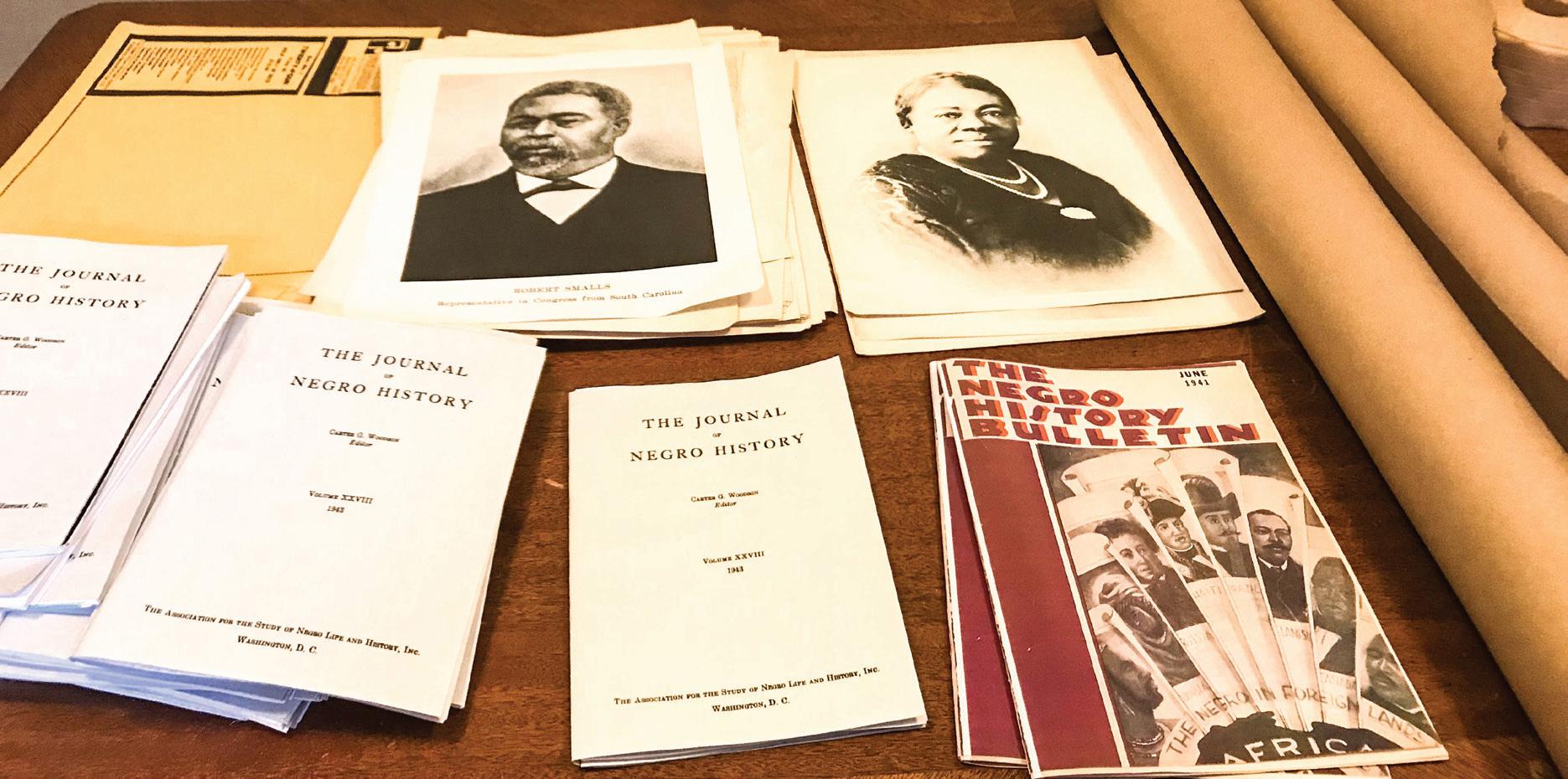
Douglass. Lincoln was born on Feb. 12, and Douglass, a former slave who did not know his exact birthday, celebrated his on Feb. 14.
Daryl Michael Scott, a Howard University history professor and former ASAAH president, said Woodson chose that week because Black Americans were already celebrating Lincoln’s and Douglass’s birthdays. With the help of Black newspapers, he promoted that week as a time to focus on African-American history as part of the celebrations that were already ongoing.
The first Negro History Week was announced in February 1926.
“This was a community effort spearheaded by Woodson that built on tradition, and built on Black institutional life and structures to
create a new celebration that was a week long, and it took off like a rocket,” Scott said.
Negro History Week was wildly successful, but Woodson felt it needed more.
Woodson’s original idea for Negro History Week was for it to be a time for student showcases of the African-American history they learned the rest of the year, not as the only week Black history would be discussed, Scott said. Woodson later advocated starting a Negro History Year, saying that during a school year “a subject that receives attention one week out of 36 will not mean much to anyone.”


Individually several places, including West Virginia in the 1940s and Chicago in the 1960s, expanded the celebration into Negro History Month. The civil rights and Black Power movement advocated for an official shift from Black History Week to Black History Month, Scott said, and, in 1976, on the 50th anniversary of the beginning of Negro History Week, the Association for the Study of African American History made the shift to Black History Month.
Every president since Gerald R. Ford through Joe Biden has issued a statement honoring the spirit of Black History Month.
Ford first honored Black History Week in 1975, calling the recognition “most appropriate,” as the country developed “a healthy awareness on the part of all of us of achievements that have too long been obscured and unsung.” The next year, in 1976, Ford issued the first Black History Month commemoration, saying with the celebration “we can seize the opportunity to honor the too-often neglected accomplishments of Black Americans in every area of endeavor throughout our history.”
President Jimmy Carter added in 1978 that the celebration “provides for all Americans a chance to rejoice and express pride in a heritage that adds so much to our way of life.” President Ronald Reagan said in 1981 that “understanding the history of Black Americans is a key to understanding the strength of our nation.”


22.
25. Church group
Sammy Davis, _ _
26. **”Till we stand at ___ ,” [L]
28. **Bluesman Redding
30.
31. **_ittle _ichard of “Tutti Frutti”
32.
34. Hymn “Rock of ___”
37. **Singer Al Green’s home state (abbr.)
38. **”Resound loud as the rolling __,” [L]
41. *World’s longest river
42. Crescent-shaped
44. **Belafonte’s “The Banana Boat” song
45. Told stories

Down
1. “Therefore the nations went ___” (Jeremiah 51:7)
2. “Give it ___!”
3. **Aretha Franklin classic
4. **”Keep us forever __ the path,” [L]
5. Over 21
6. **”___ not our weary feet,” [L]
7. Robotic (abbr.)
8. H_ _ _NG (garden work)
9. **”Do you know the way to __ __?” (Dionne Warwick song)
10. “Geam of our __ is cast” [L]
17. Foe
18. Set Mode (abbr.)
20. **Song: “__ Times Goes By”
21. **Ray Charles classic “___ on my Mind”
23. **Tenor R_ _ _ _ D Hayes (“Deep River”)
24. **Mahalia, Janet or Jermaine
27. *Preacher/author _ _ Jakes
29. Direction: opposite of NW
30. **Marian Anderson classic (“Ave __”)
31. **”True to our native ___” [L]
33. **Eartha Kitt (“Santa ___”)
35. Nevada city

